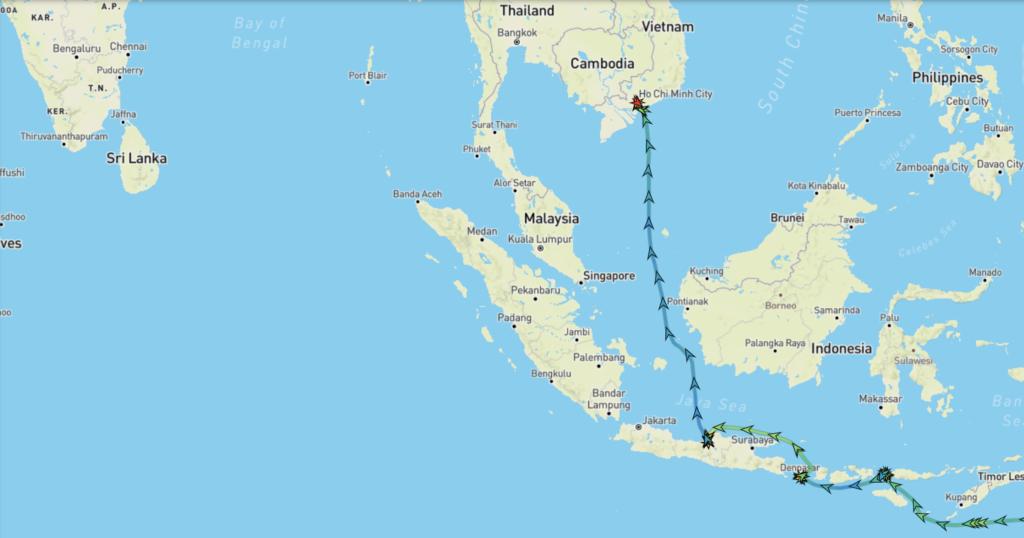
Noon Report:
Location: N 10° 38.38′, E 106° 45.74′
Speed: Docked
Course: Docked
Weather: Light Overcast
Temperature: 31º C, 88º F
Wind: E 1 knot, 1 mph
Walking the deck this morning I could see land ahead in the haze. It appears that we have arrived in Vietnam. We spent the rest of the morning winding our way…
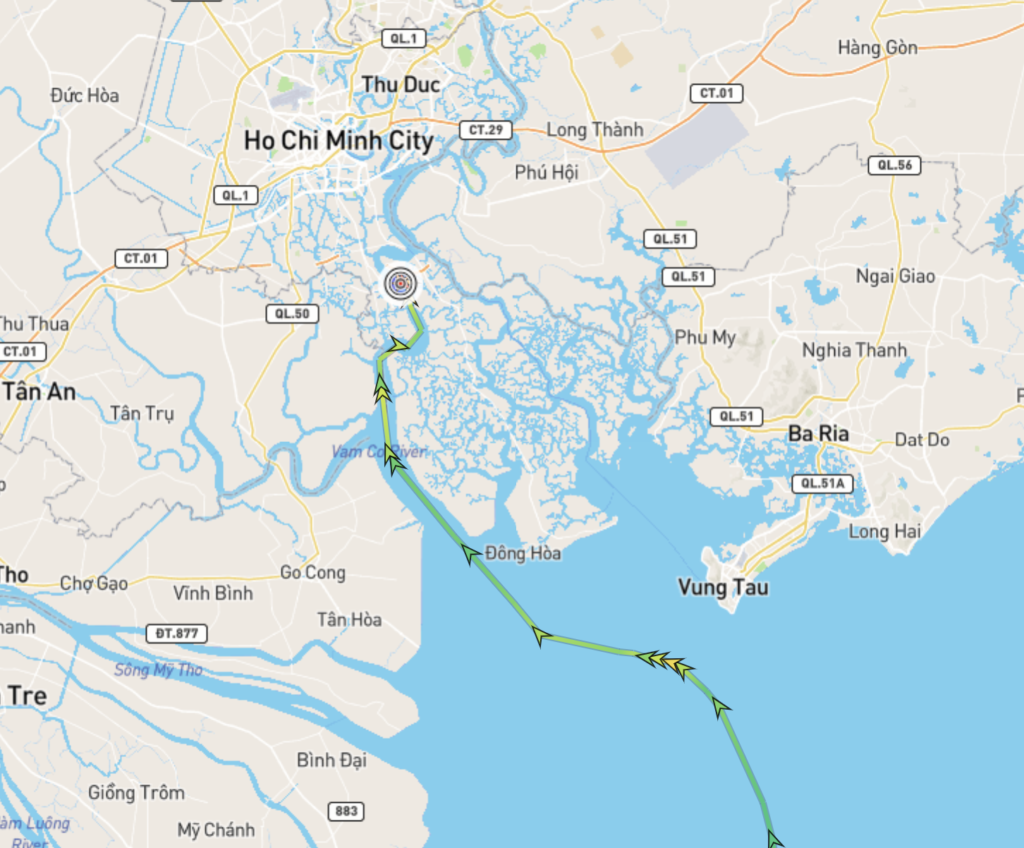
We docked just before noon.
While we were threading that needle Randy had a Zoom meeting and Cheryl attended a lecture on 1968 – The Vietnam War’s Pivotal Year.
Following lunch we packed up our essentials for the afternoon, slathered on sunscreen and bug repellant and prepared for our afternoon adventure.
We presented ourselves at the Theatre, checked in, and joined the rest of the passengers waiting for the Vietnamese officials to “clear the ship” – approve us to go ashore.
Then we waited some more.
45 minutes later we were cleared and we moved, in an orderly fashion, to our buses for the hour-long ride into the city.
So here’s the deal. There’s a bridge over the Saigon River. We’re too tall to fit under that bridge (virtually all cruise ships are). So we docked in the shipping port south of the city.
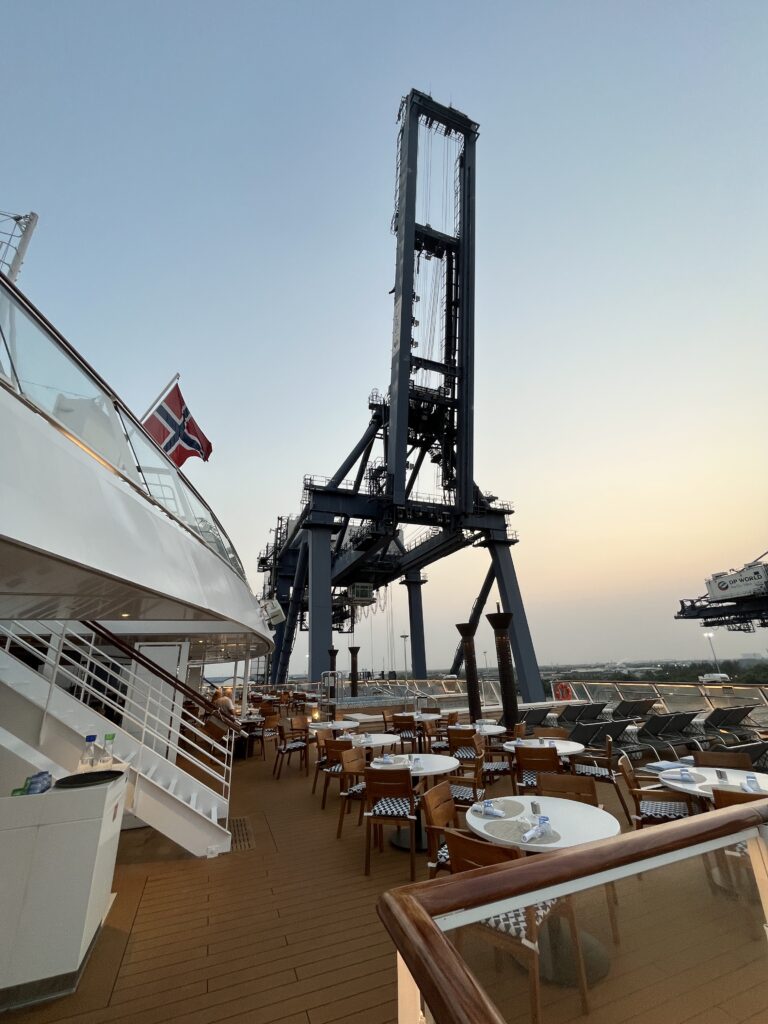
What with traffic and such, it takes about an hour each way to get from the ship to any shore-side activity. Much of that hour is spent in the industrial part of town. The photos below will give you a sense of the roadside commerce that goes on, not only here, but all over the city. For a communist country there’s a lot of private entrepreneurship to be evident in this industrious and resourceful people.
Our guide mentioned that it was Ladies Day (International Women’s Day). Apparently it’s a big deal in HCM City.
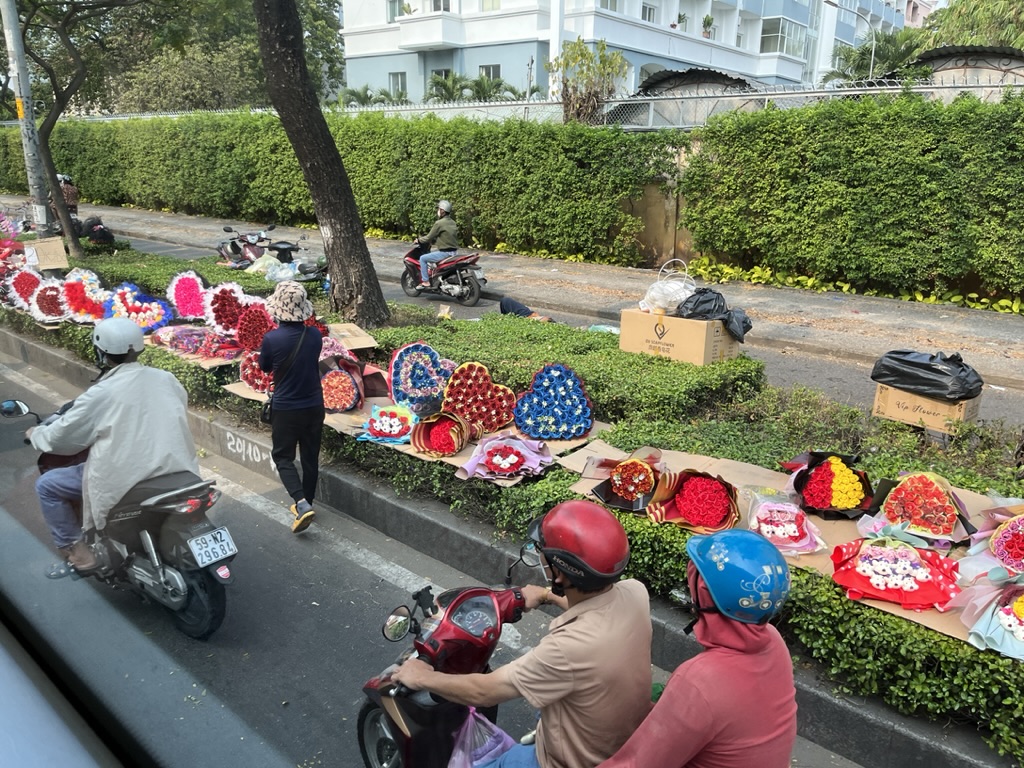
And then there are scooters. Before we leave on Saturday I may post a video of a flood of scooters but we agree that however many scooters there are here they are much better behaved than what we experienced in Bali (in the village in Bali, they didn’t have stop lights when the roads fork or “Walk/Don’t Walk” lights at intersections). However, the rule is DON’T STOP in the middle of the street and try to judge which way to jump out of the way of an oncoming scooter, because then you are in the way of the two crossing behind you – just keep moving on at a steady pace and they will flow around you.
Our first stop was the central marketplace, a large complex of market stalls that spills out into the streets and neighboring buildings. The variety is amazing and the quantities range from a single piece of candy to a gross of Crocs.
Our guide took us on a tour around the facility and then turned us loose to explore. It was a bit overwhelming. But if you need a case of AA batteries and there isn’t a Costco handy…
Seriously, it is a cultural experience, even if you don’t have anything on your shopping list.
Our next stop was the Thien Hau Temple. This temple was constructed in 1760 by the Cantonese community in the city and dedicated to the Chinese goddess of the sea Mazu who saves fishermen and people from drowning. This is still important today as many people’s livelihoods (as well as supper) come from fishing along the length of the Mekong and Saigon rivers.
We also did a bit of driving around getting from here to there and back again. Here are a few sites we passed:
Note that helmets are required (unless you are a child!) and most people wear a mask against the city’s air pollution. People also wear a light jacket to protect their skin from getting sun tanned so they won’t be mistaken as farm laborers.
Our next stop was the signature event on this excursion – the Saigon by Pedal Cab ride. Sadly, because of the delay in clearing the ship this morning, our 45 minute ride was cut down to 15 minutes. Here are a couple of videos from pedal cab level:
Our destination on the ride was a lacquerware factory. They explained the process and we got to see some craftspeople at work.
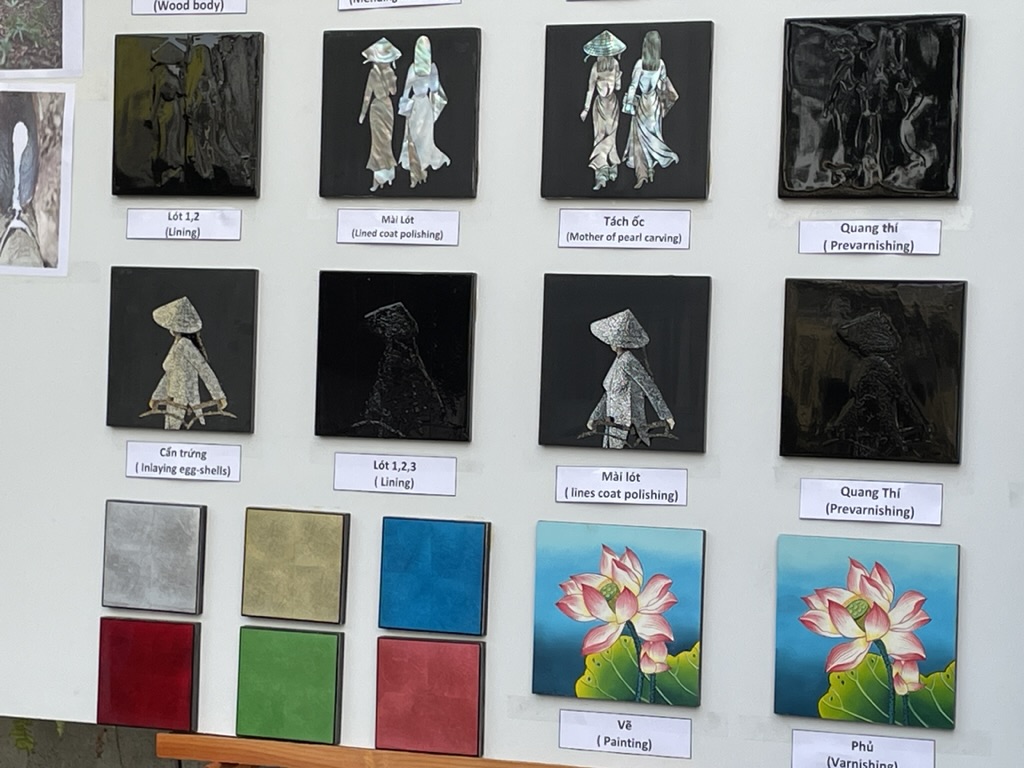
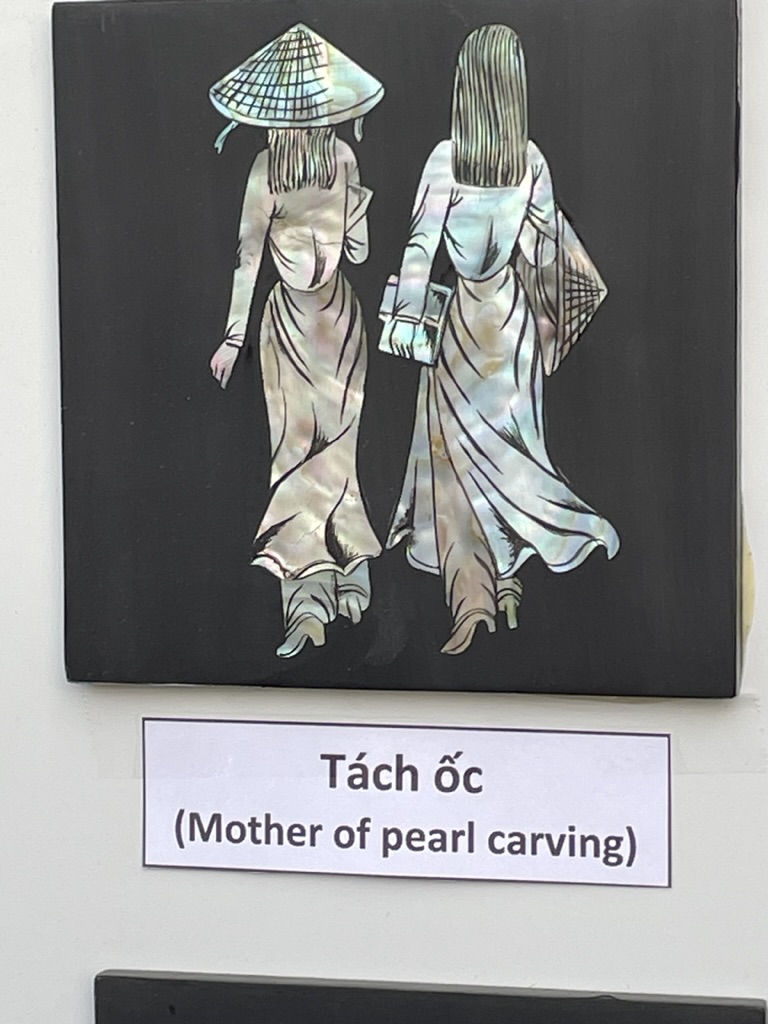
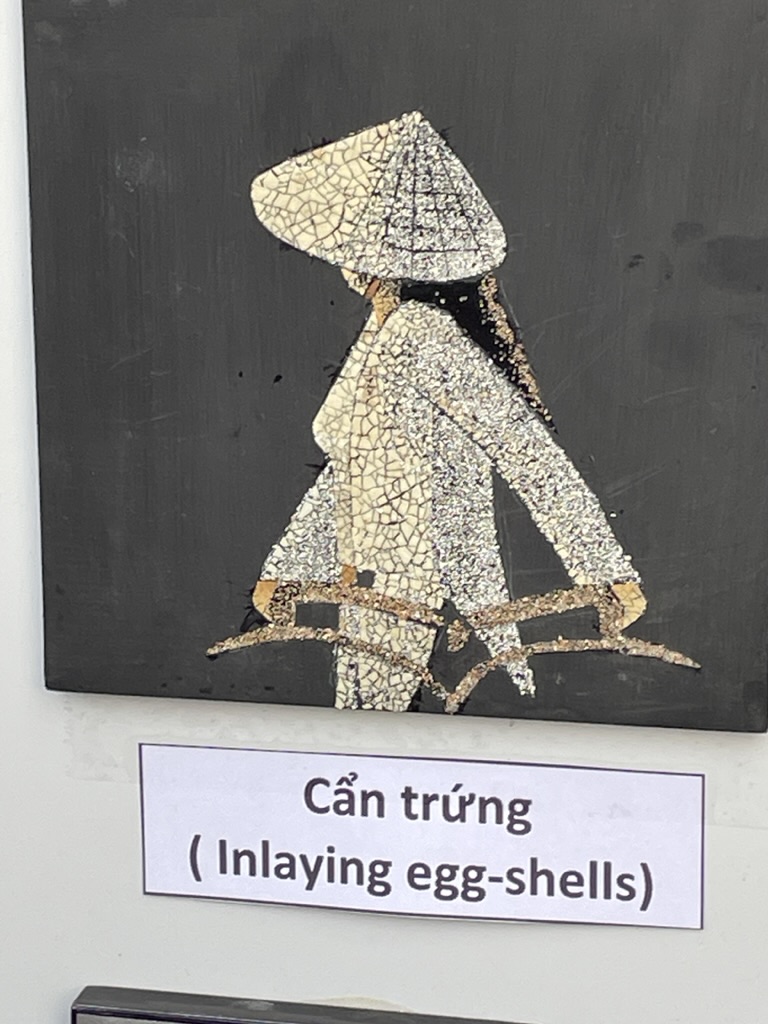
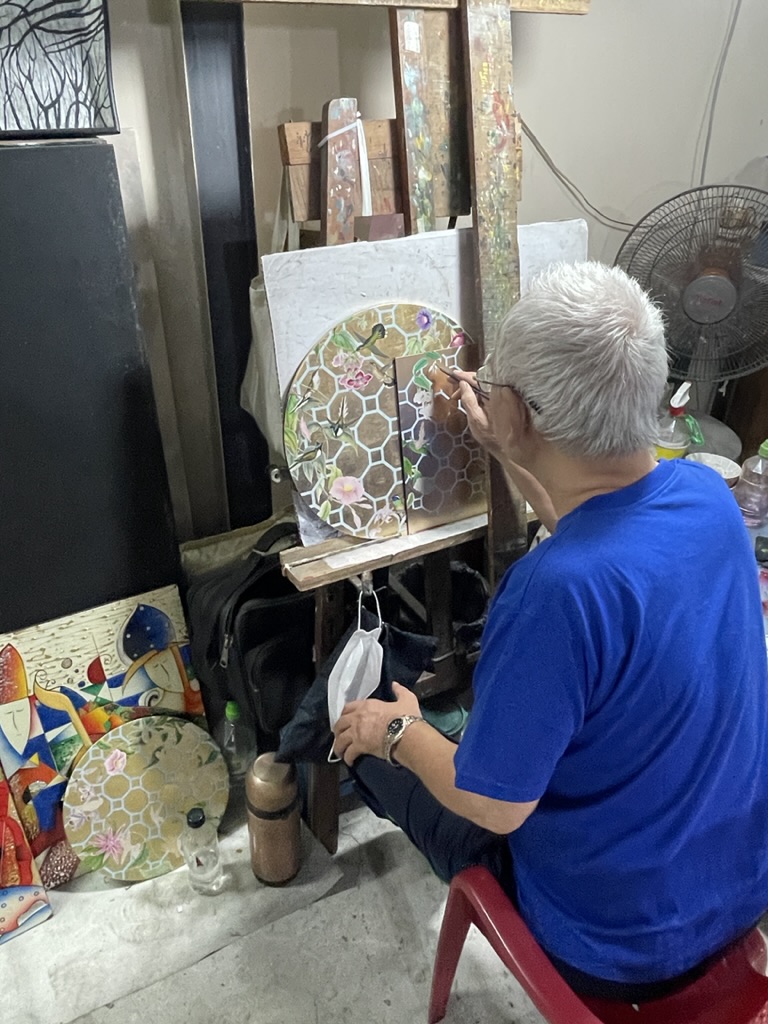
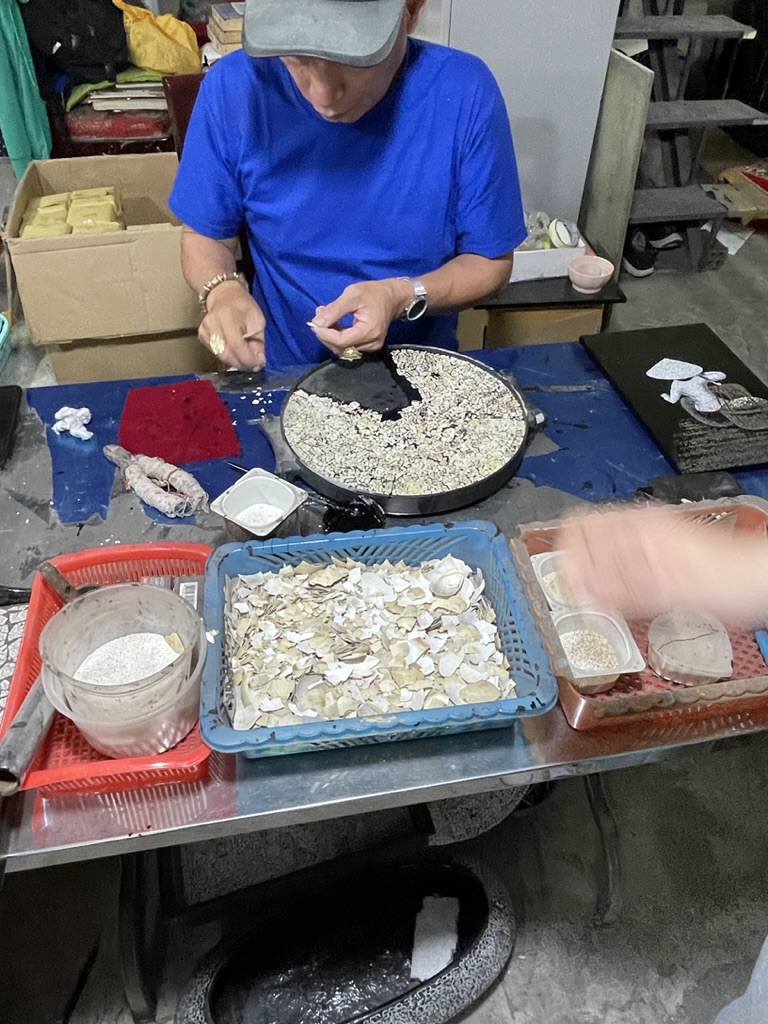
They use duck egg shells because chicken egg shells are too thick.
Of course we had the opportunity to purchase some finished product. Here are some examples of items our children won’t have to fight over once we kick it.
Sadly we made it out of there unscathed.
Our last stop for the excursion was dinner – an interesting and tasty meal served in a very nice restaurant in an unassuming back alley.
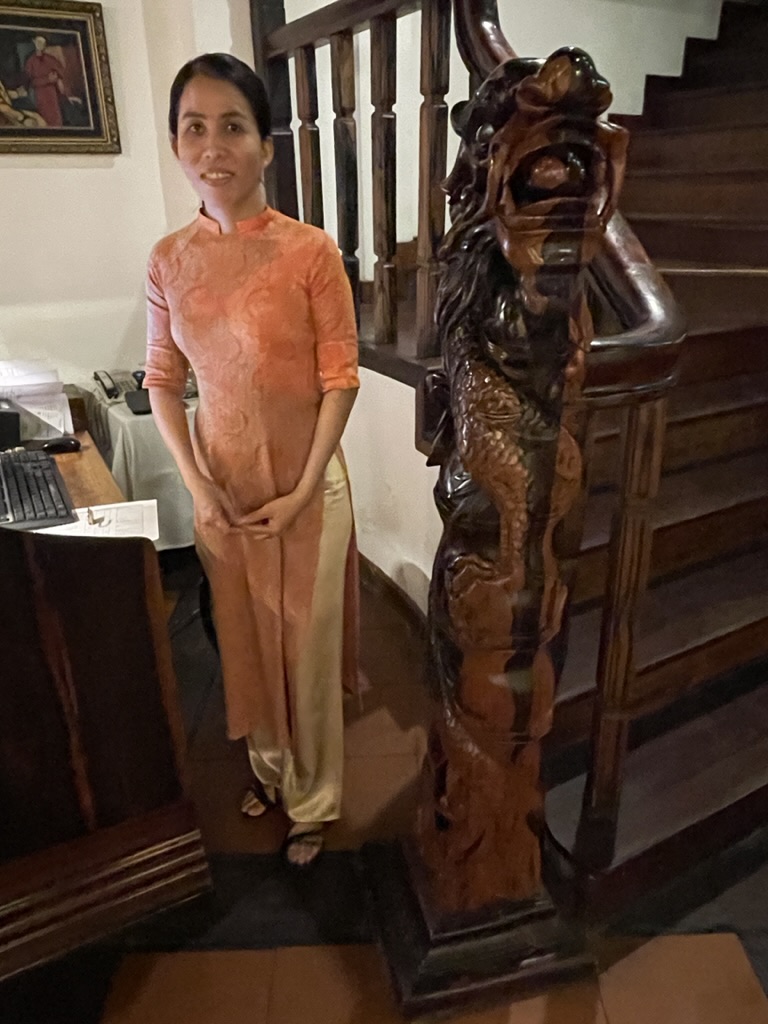
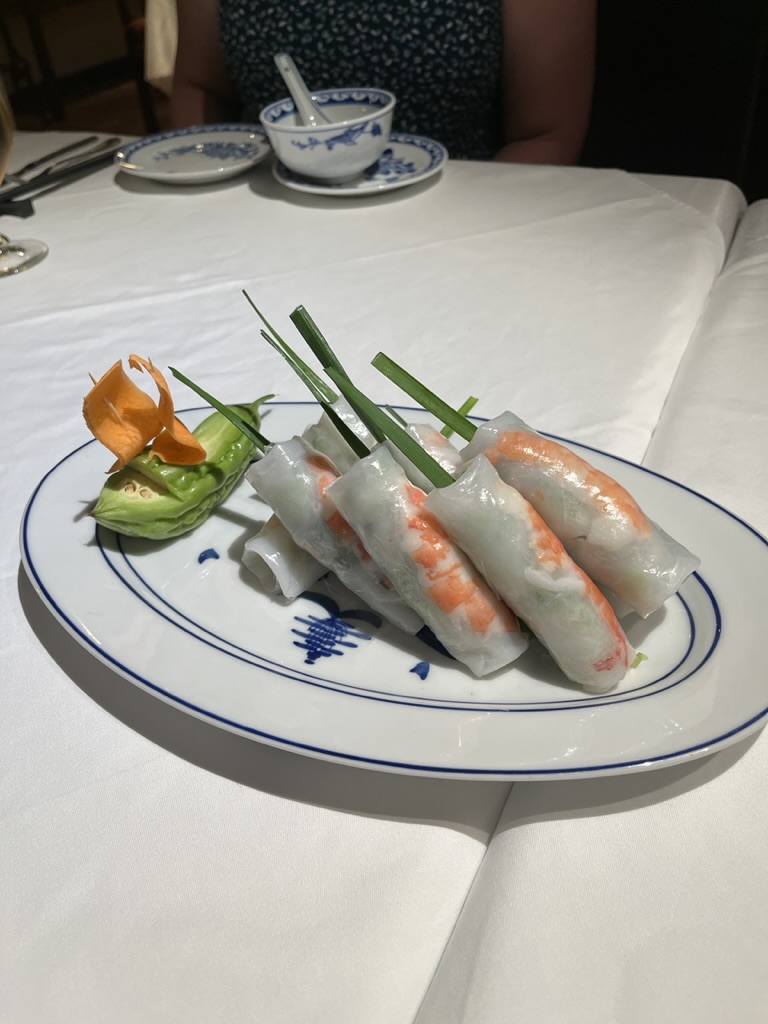
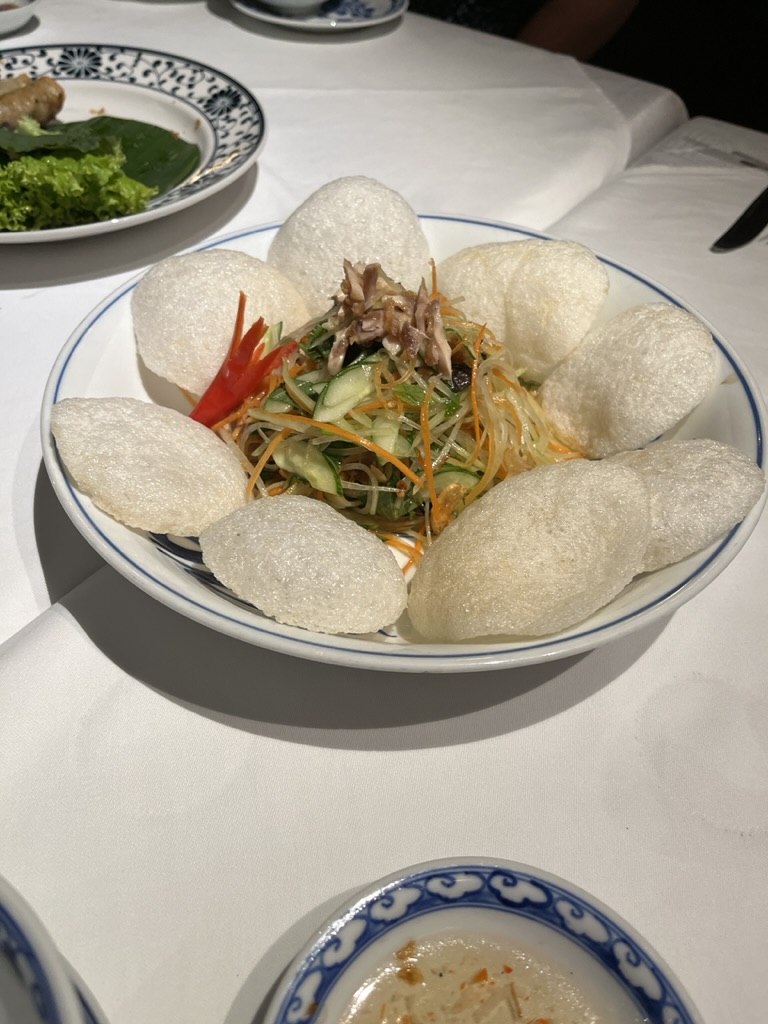
Following dinner it was back on the bus for the hour+ drive back to the ship.
Here are a few street scenes we managed to capture along the way.
It is noteworthy that heavy scooter traffic and people eating/walking the streets continued well into the evening. Most of the people renting the city apartments are young adults sent away from the villages to get a better education/job. Often the cheapest rental units just have a bed/bathroom – no kitchen – so people get their meals from street vendors. (In families if both parents work, they often send their children to live with the grandparents back in the village where it is MUCH cheaper than raising children in the city).
On our way back to the ship we discussed the afternoon’s events – and what we had missed because of the shortened pedal cab ride (iconic sites including: City Hall, Reunification Palace, Cathedral, Main Post Office).
So we stopped by guest services on our way to our stateroom and signed up for the (included) excursion Scenic Ho Chi Minh City tomorrow.
Then it was back to the room to begin the image sorting/uploading/video production process…
And sleep.
Nite all, R
Cheryl’s Factoids:
- Interesting American mindsets for the “American War”: At the end of WWII in Europe, the war in the Pacific was still on-going. President Truman and the US needed France to participate in setting up NATO and the Marshall Plan to rebuild the European economy. The communist freedom fighters in North Vietnam under Ho Chi Minh had been fighting the French before the Japanese invasion and wanted to keep their independence from France after the WWII peace talks – however France (and also the Dutch) desperately needed the money they got from their East Indies colonies to rebuild their nations and having the US back the independence of North Vietnam would be seen as stabbing their European allies in the back. At the Geneva peace talks, the country was divided into North (communist) and South (capitalism) Vietnam.
- There were American air bases in Vietnam since 1950 (Korean War) and originally soldiers were only deployed (in 1965) to protect the air bases. The US kept getting more involved as communism was spreading across Vietnam, Laos, and Cambodia. The South Vietnam Viet Cong were mainly fighting (with aid from Communist Russia, and later from North Vietnam) against the rich landowners/foreign colonial powers of the feudal system. As support from these communist countries increased American interests became focused on stopping the spread of communism in the region so the mission of US forces grew from protecting air bases to full-scale involvement in supporting South Vietnam. In April 1975, a North Vietnamese tank bulldozed through the gates of the Presidential Palace effectively ending the war. (After the war, the Vietnamese were required to learn Russia in their schools-until the Vietnamese switched back to being friends with Communist China.) Talking with the tour guides, there is still quite a difference between the attitudes of the North (more dependent on who you know in the political party) and the South (easier going regarding religion and money making endeavors – more inclined to follow scooter helmet rules because if caught not wearing your helmet when driving/riding a scooter you have to pay a MONETARY fine).
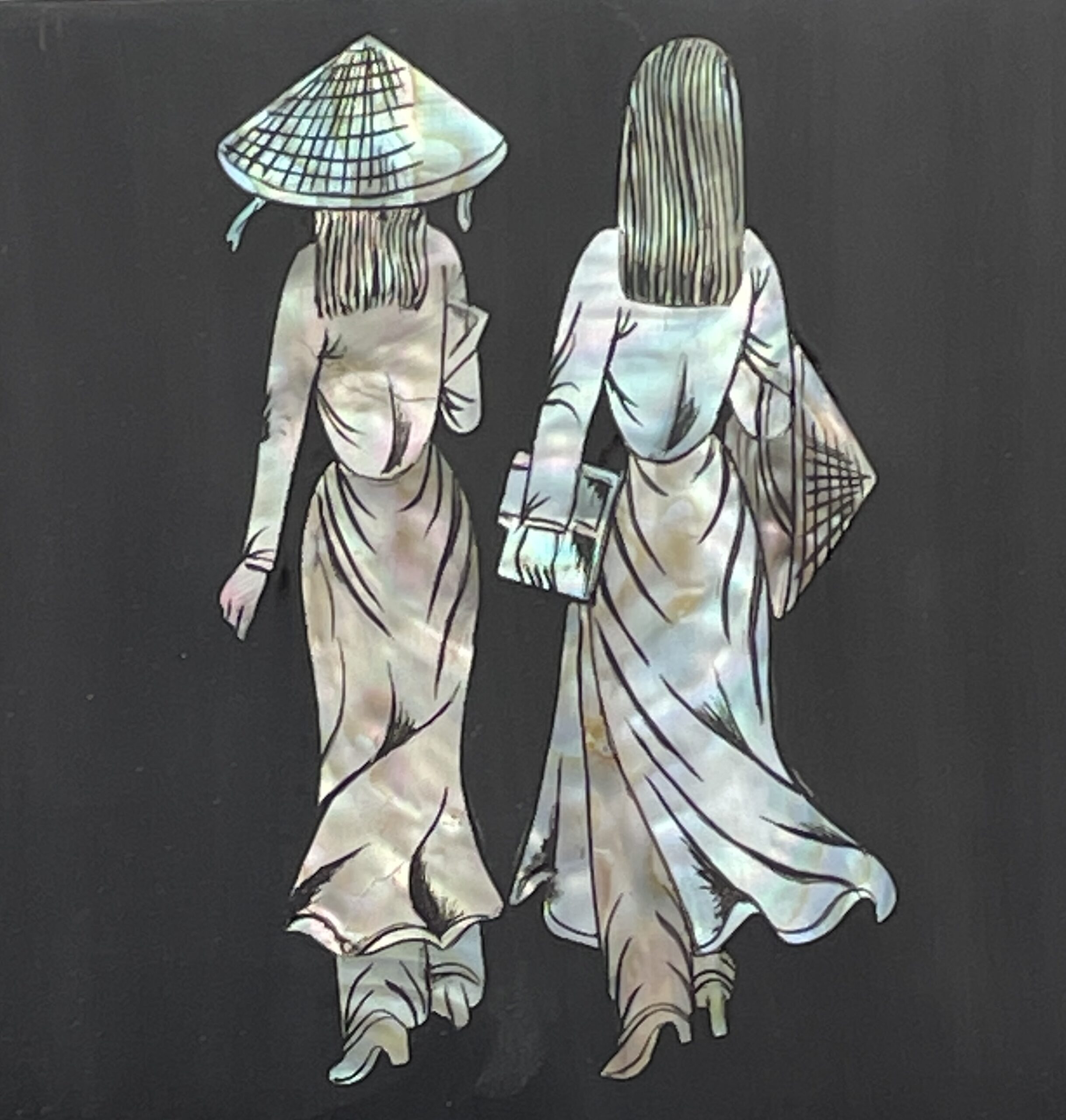
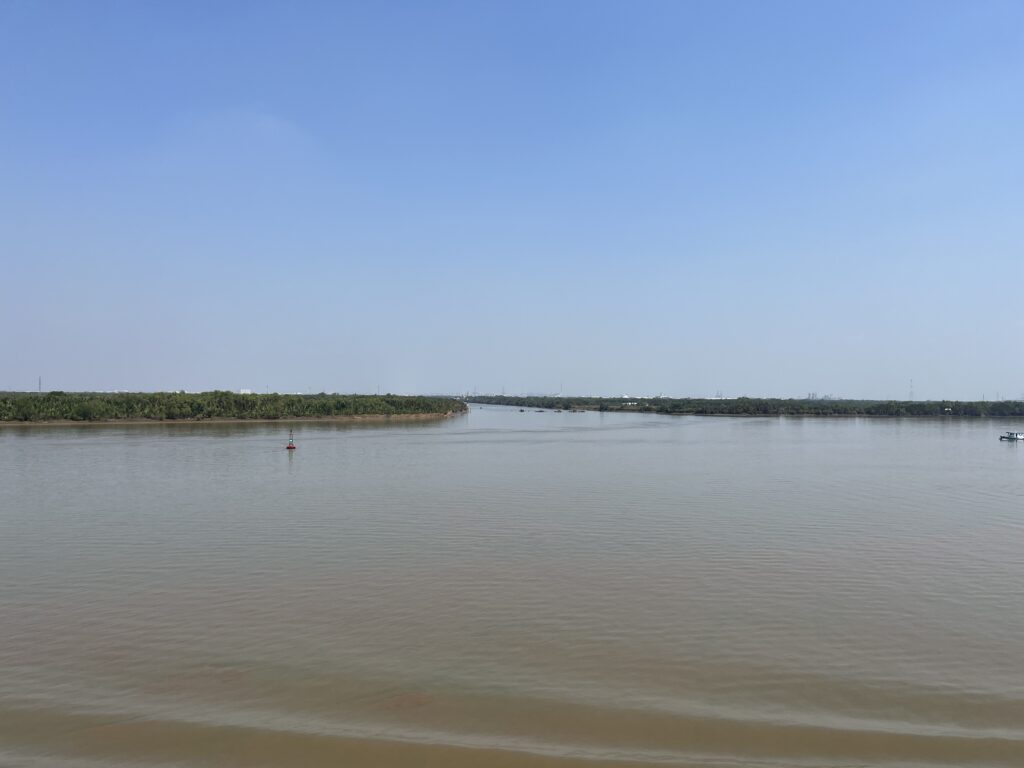
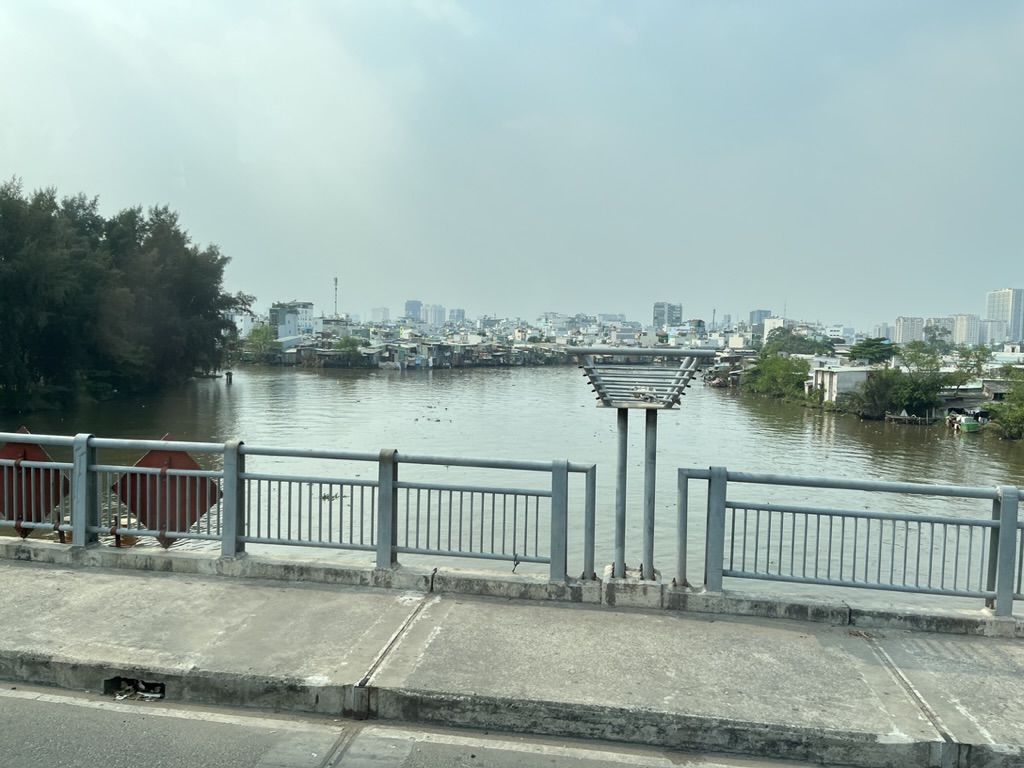
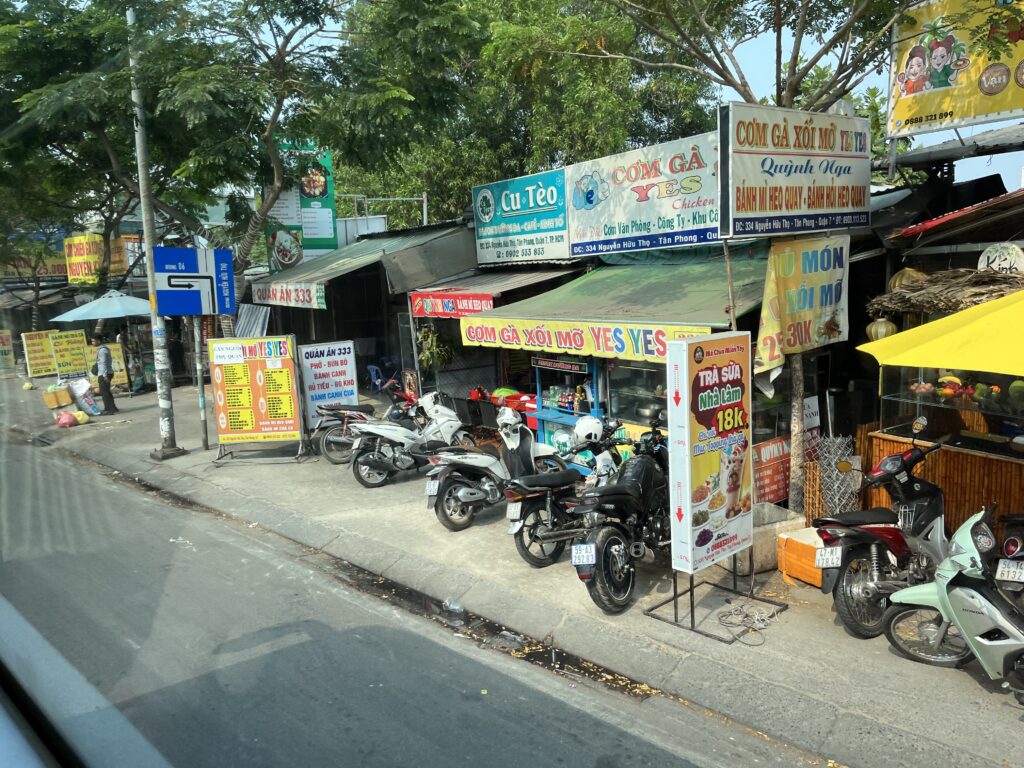
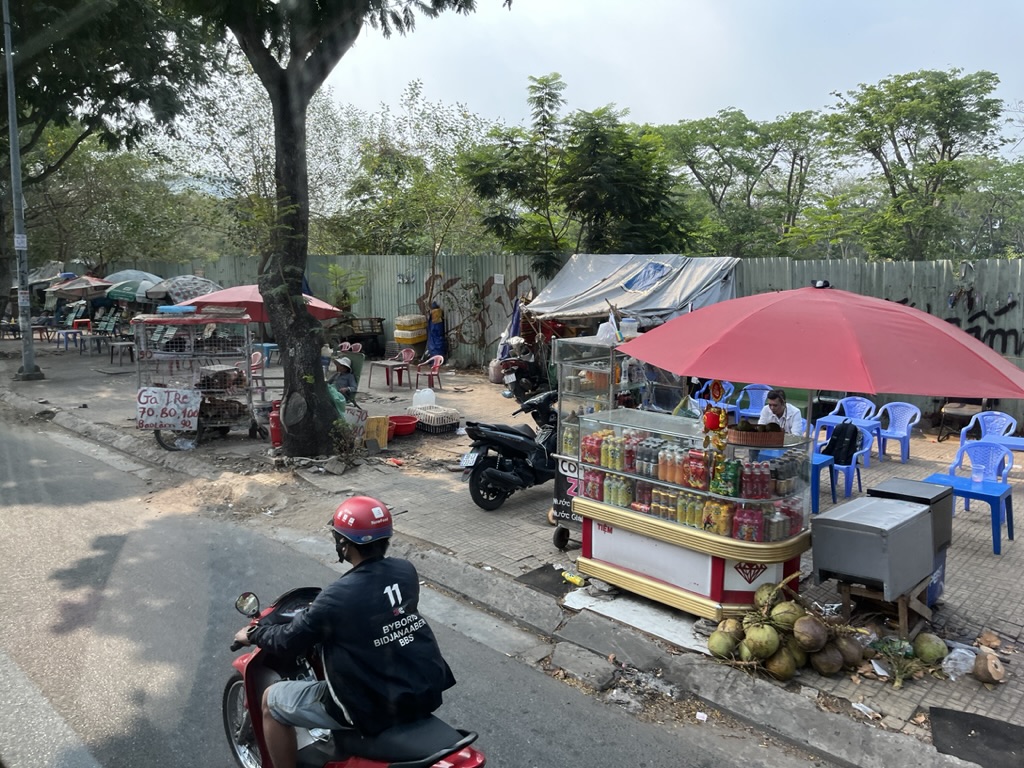
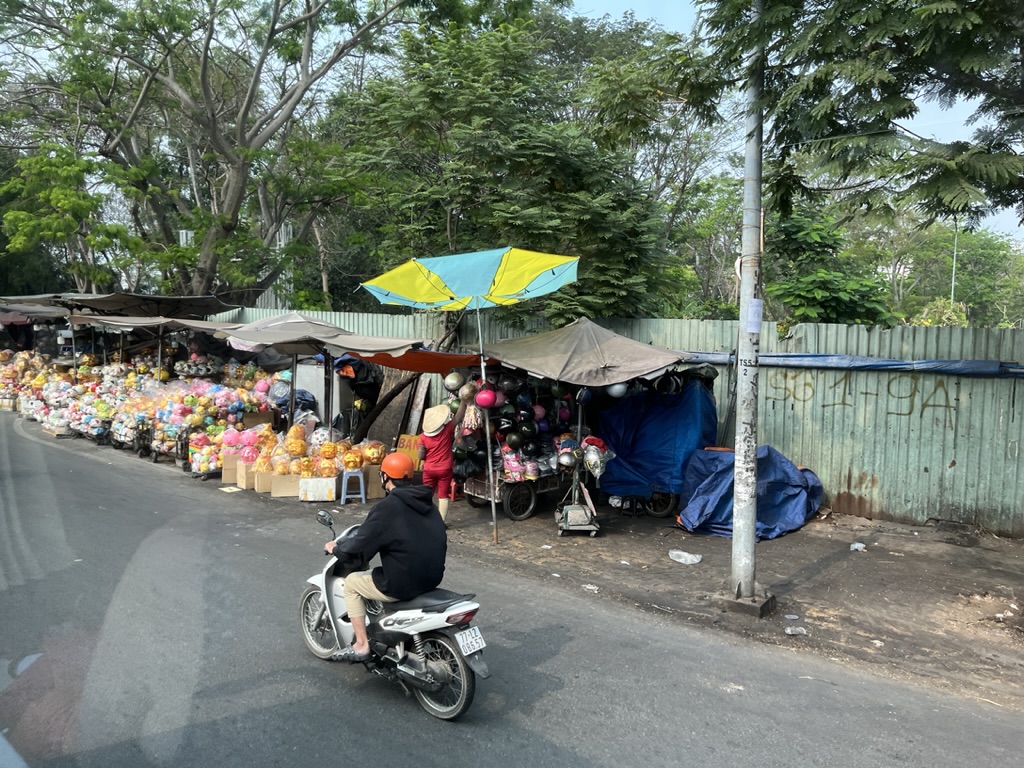
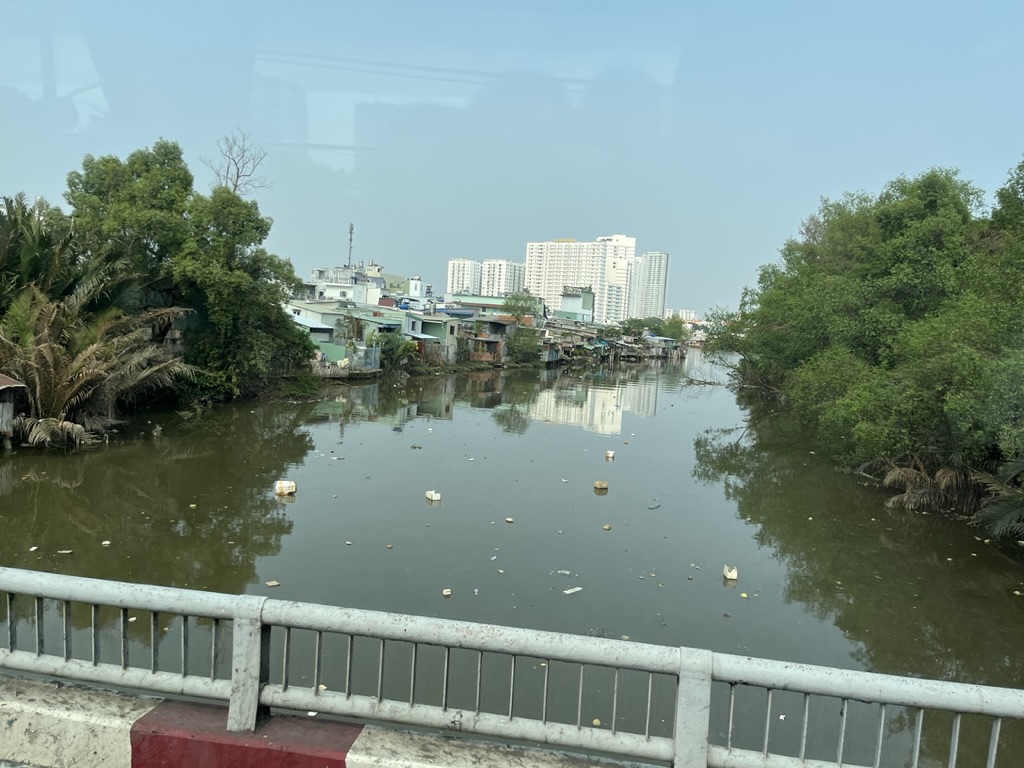
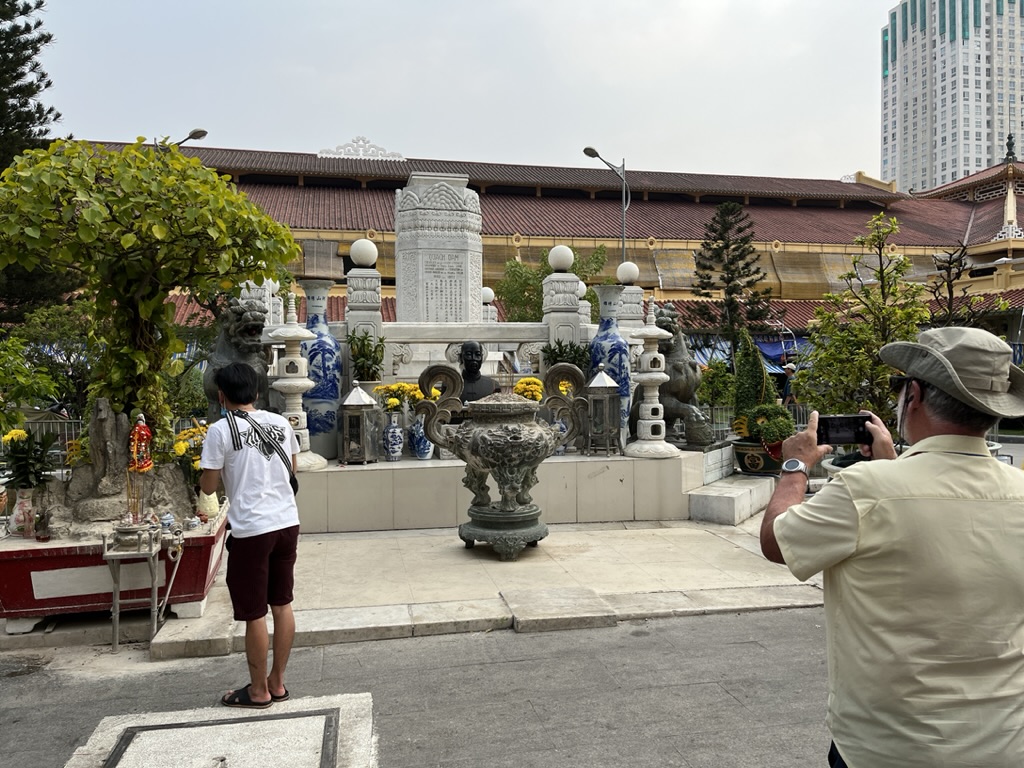
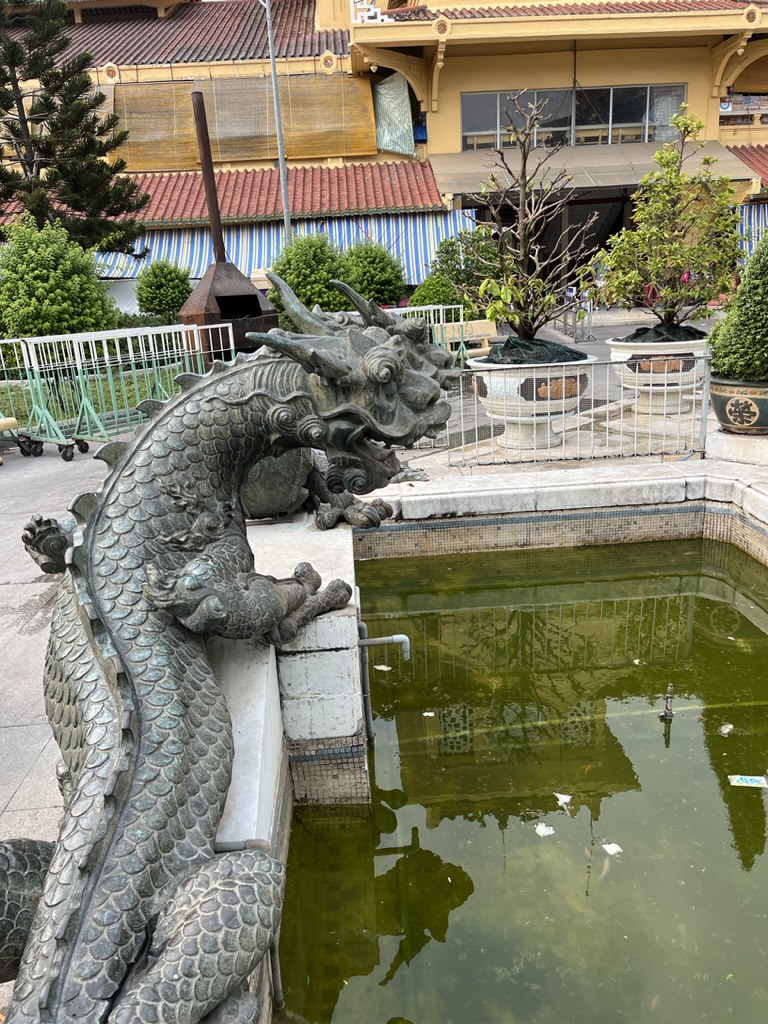
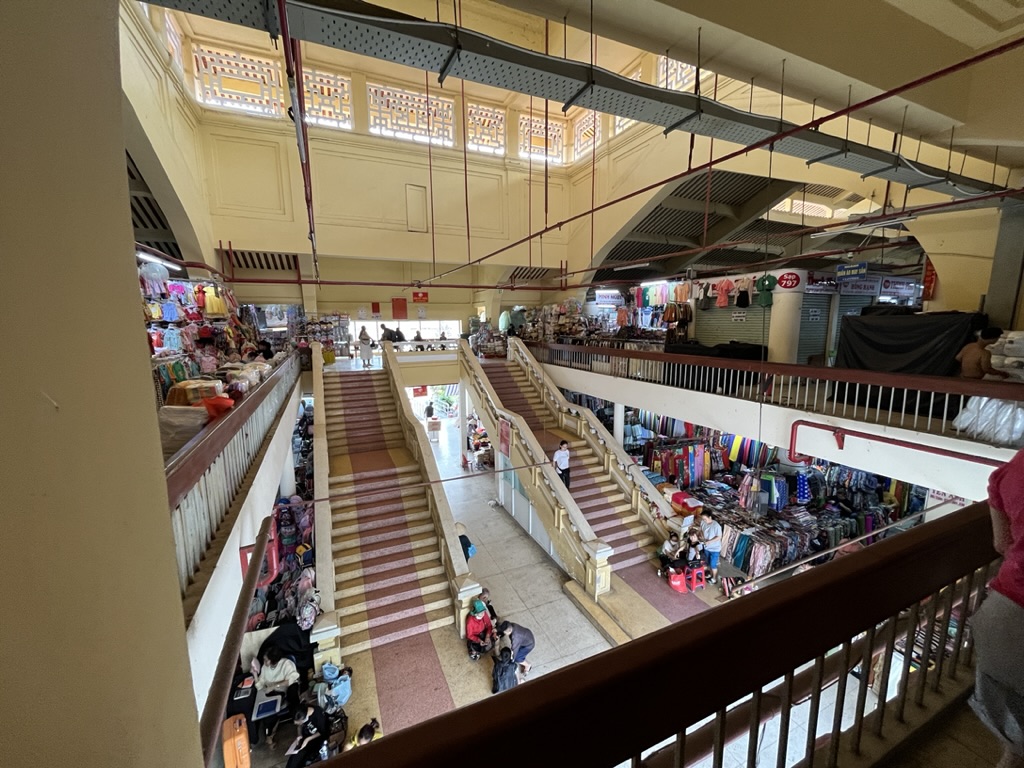
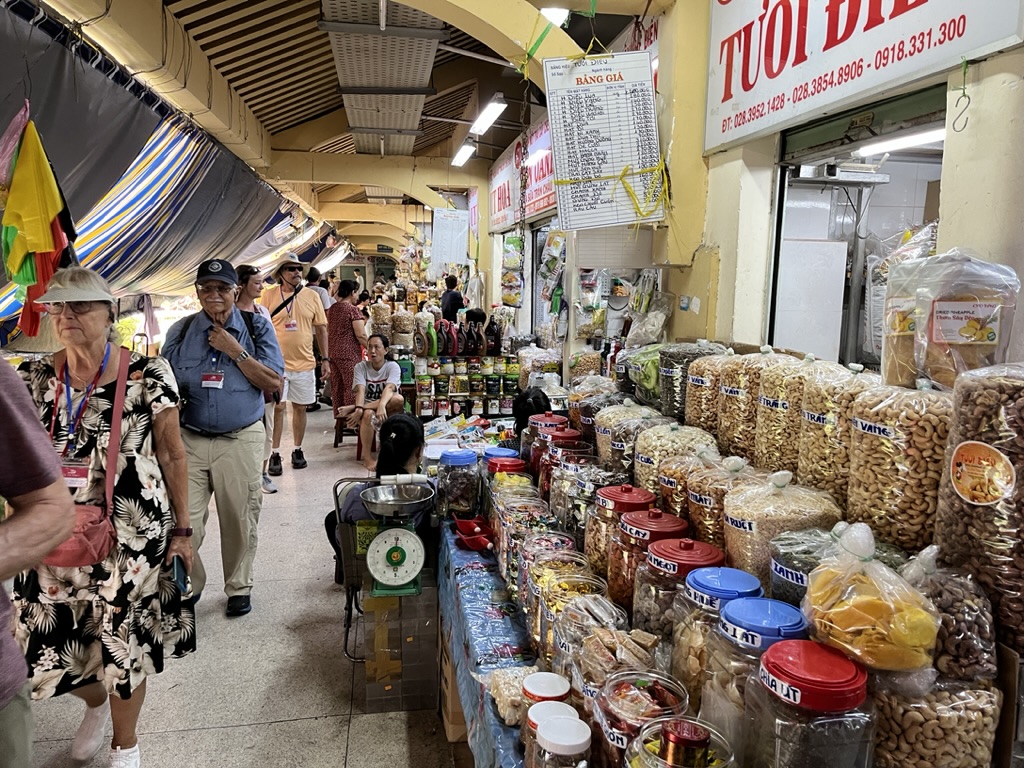
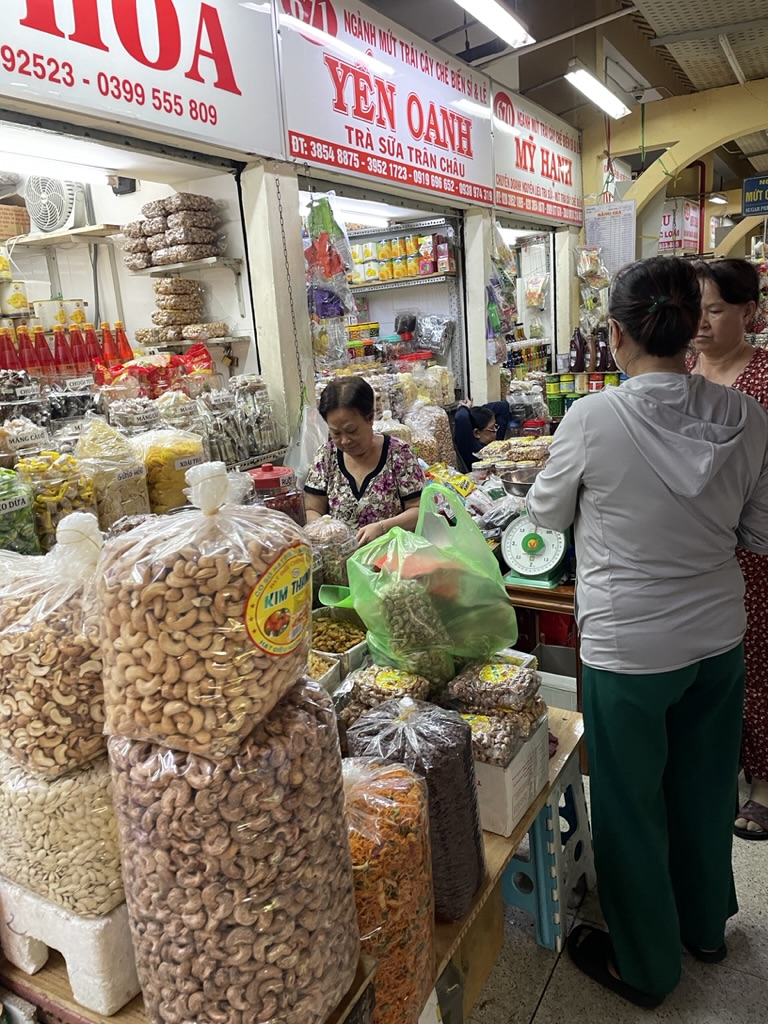
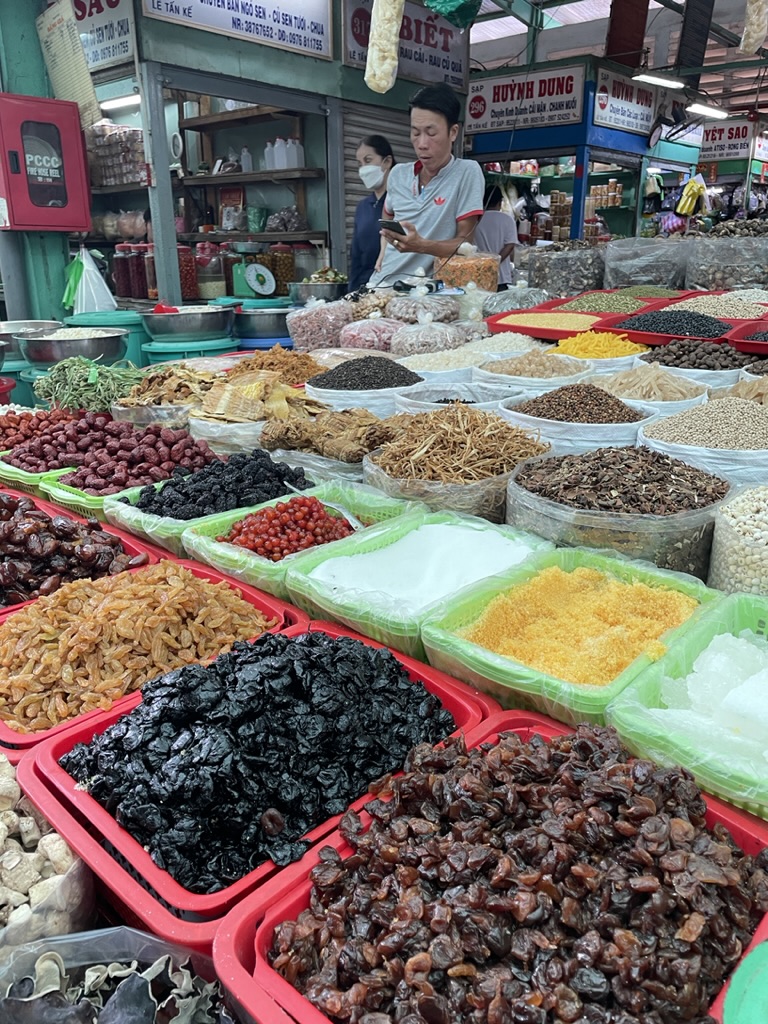
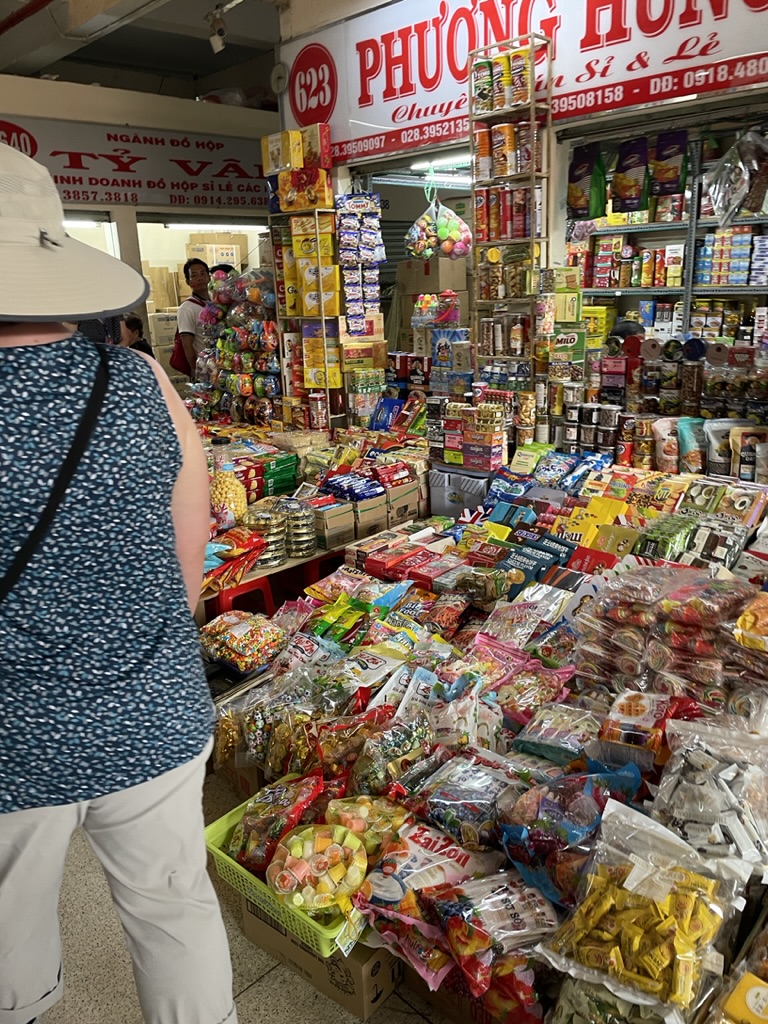
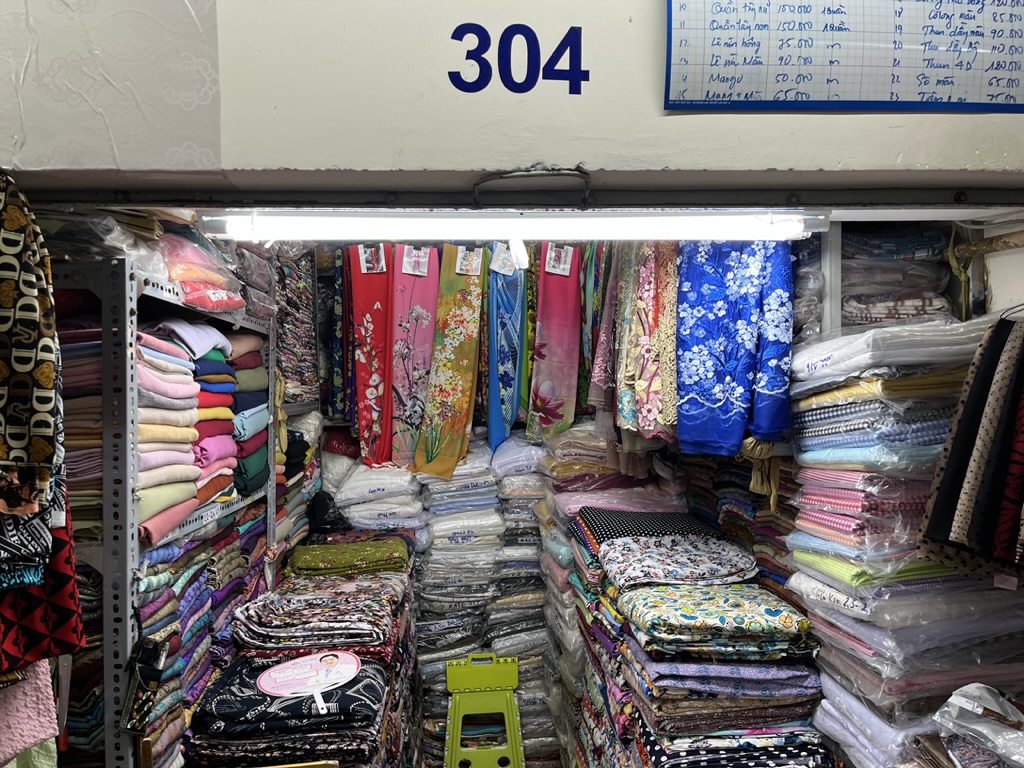
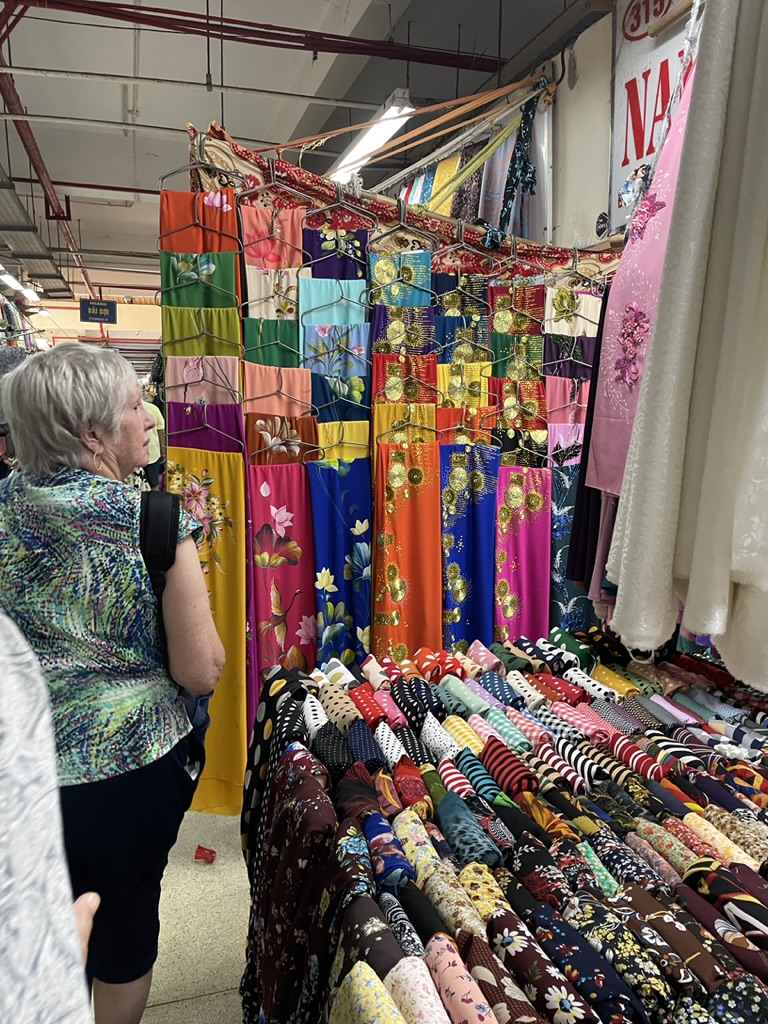
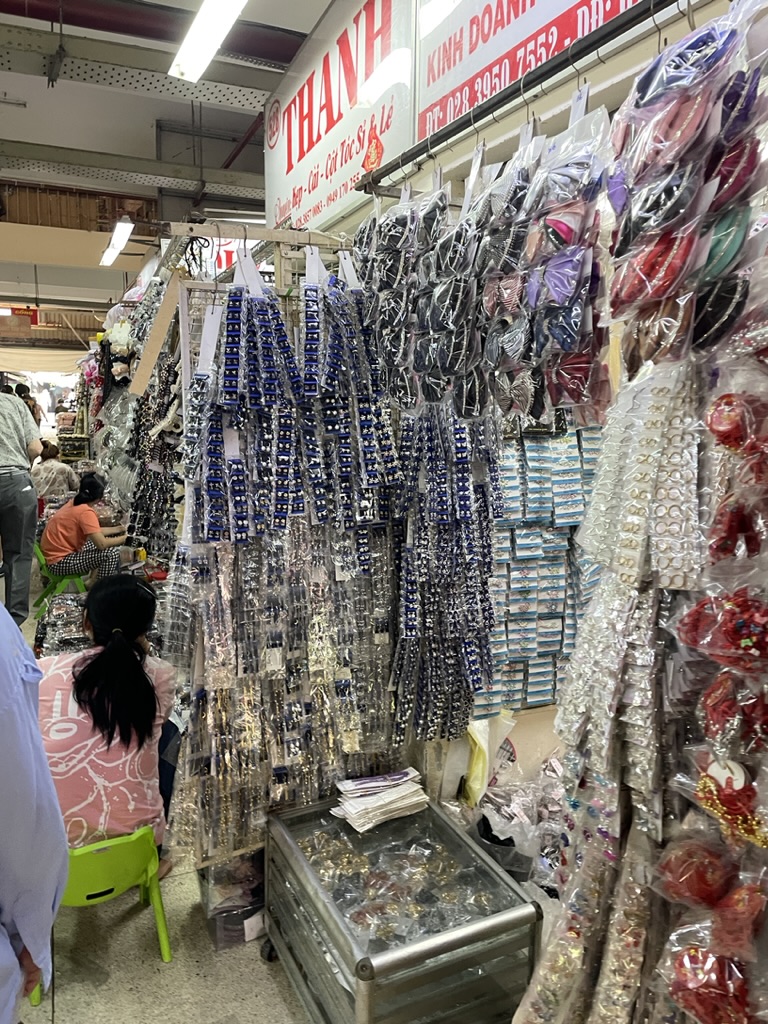
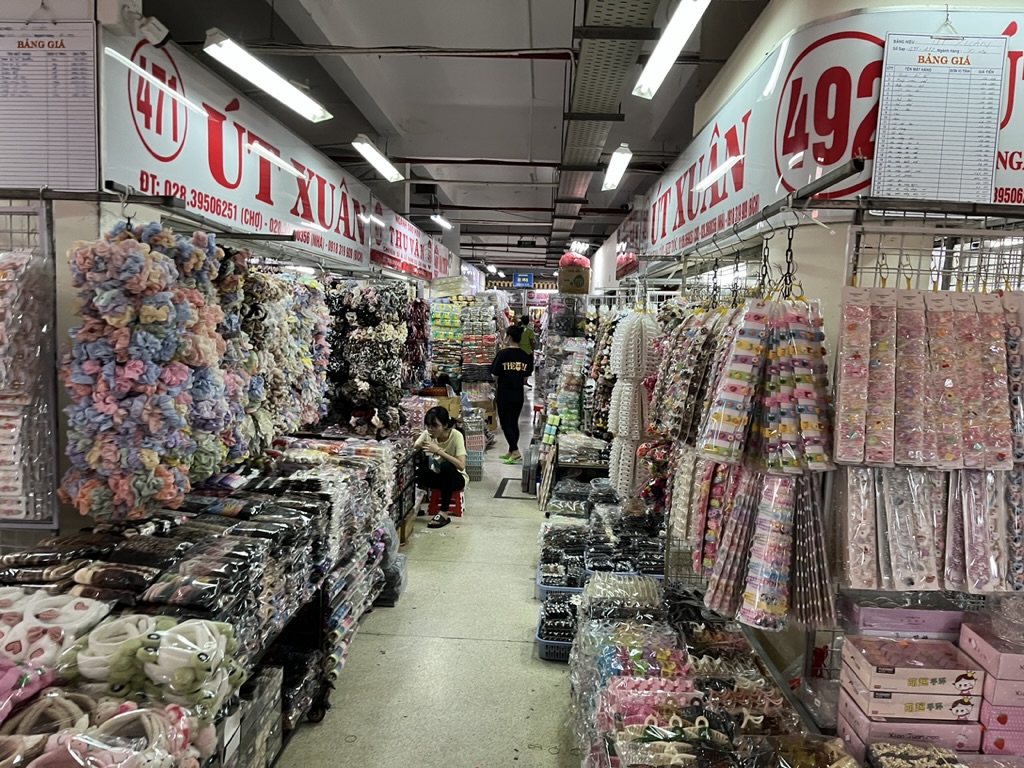
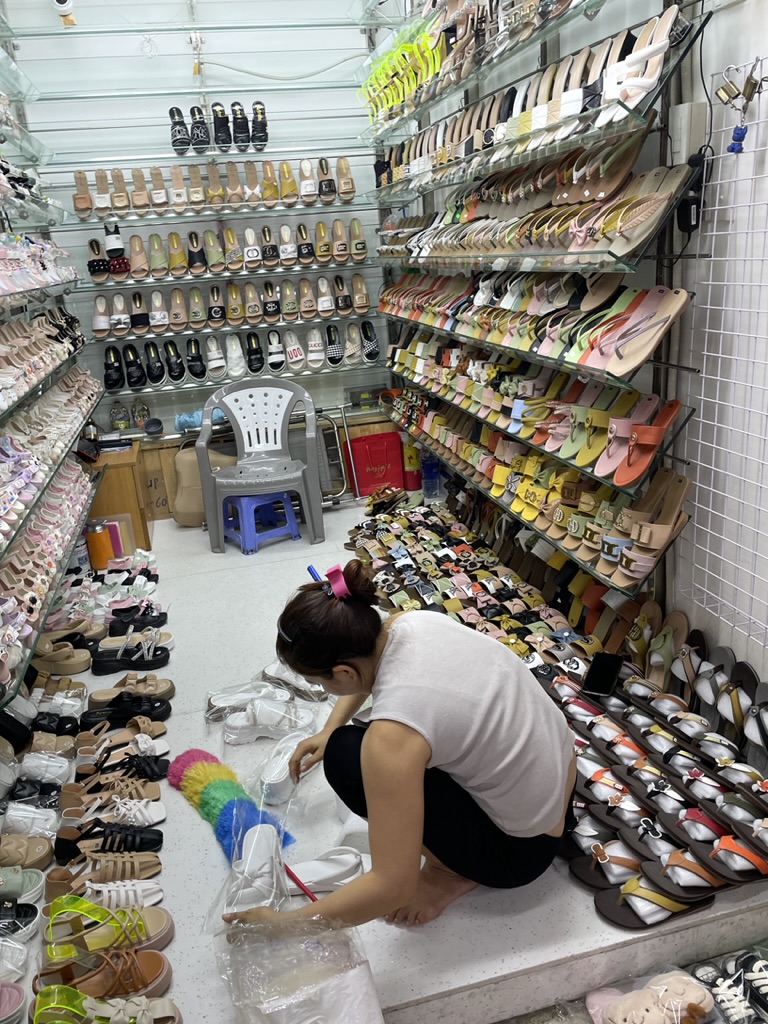
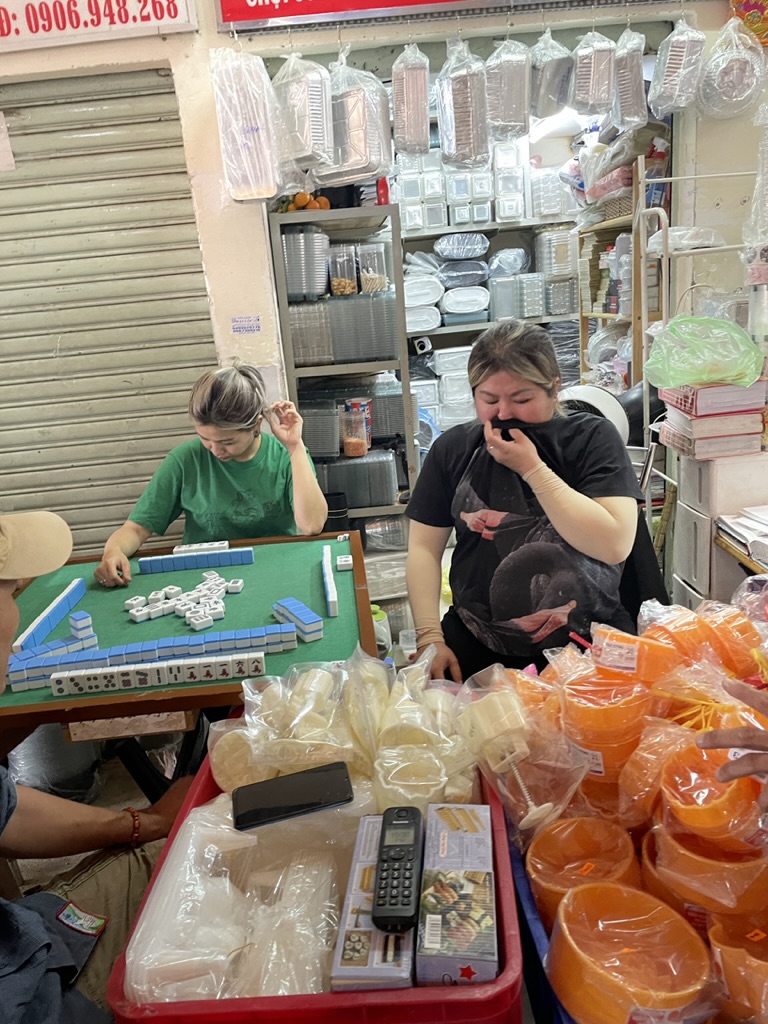
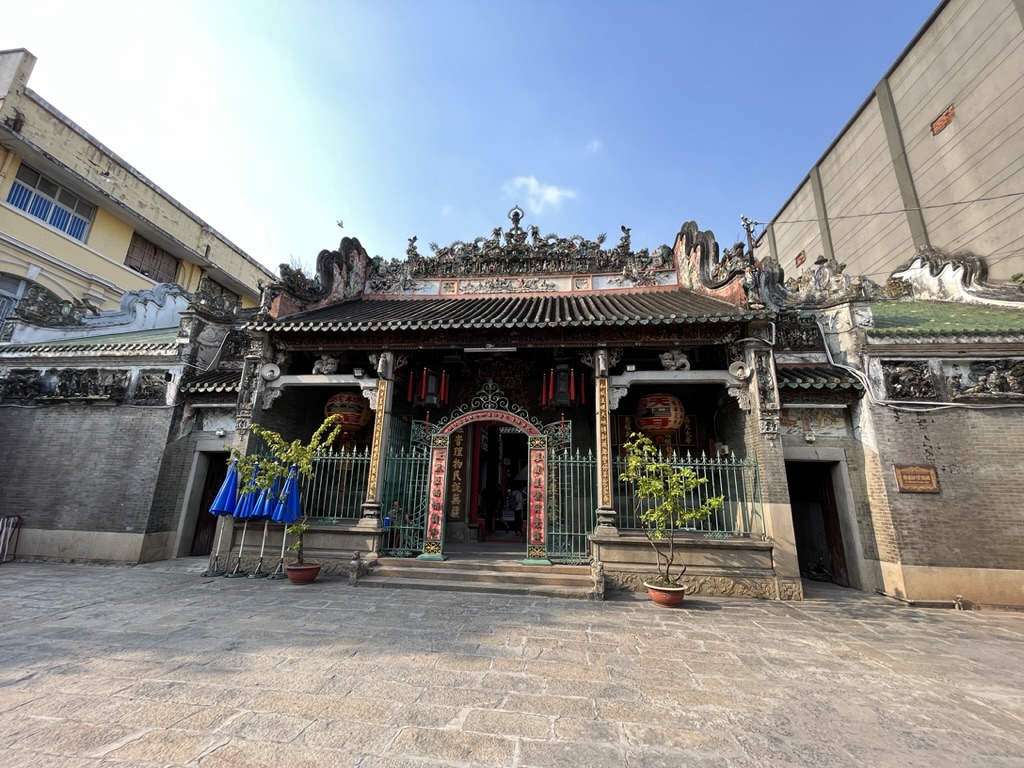
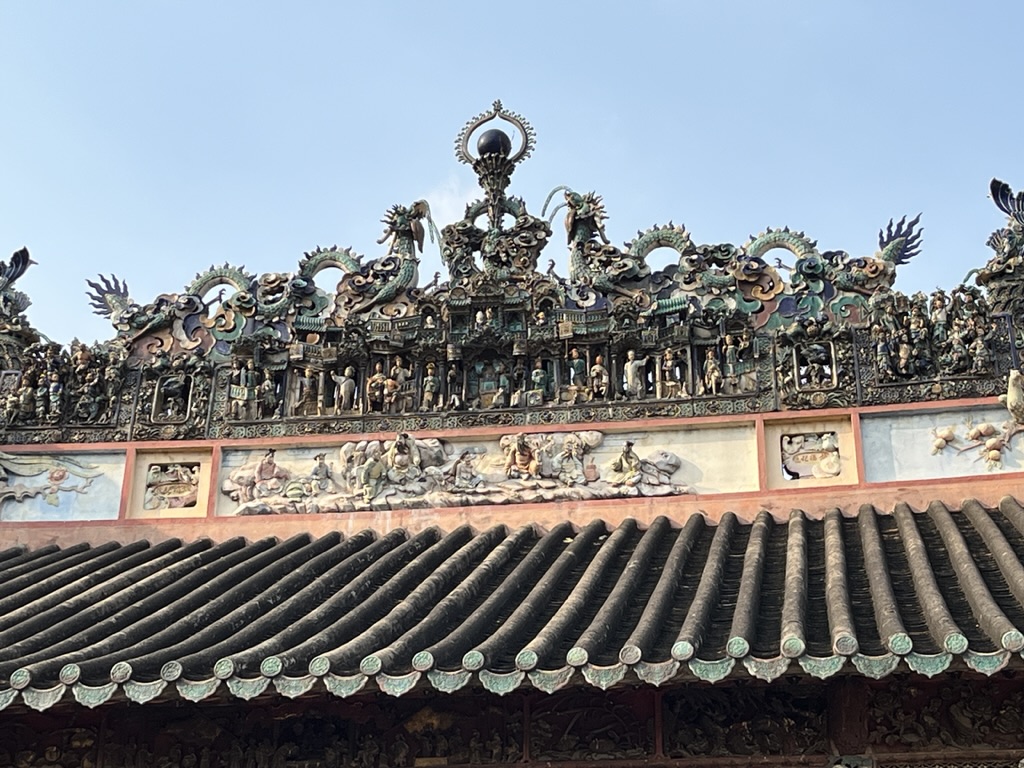
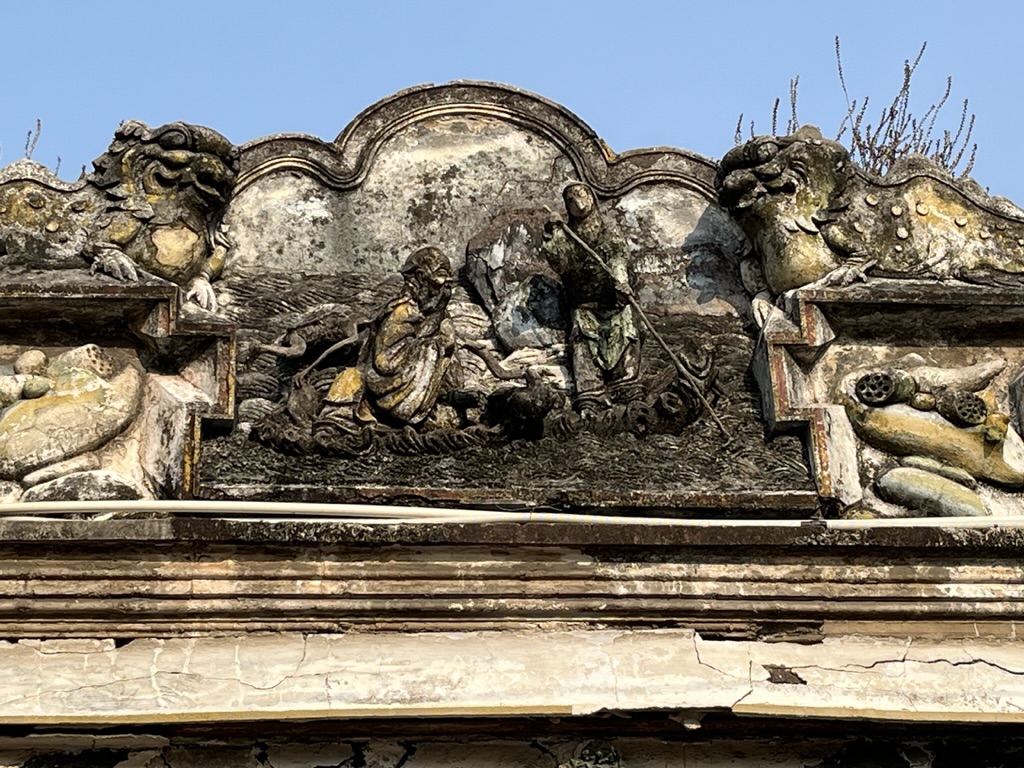
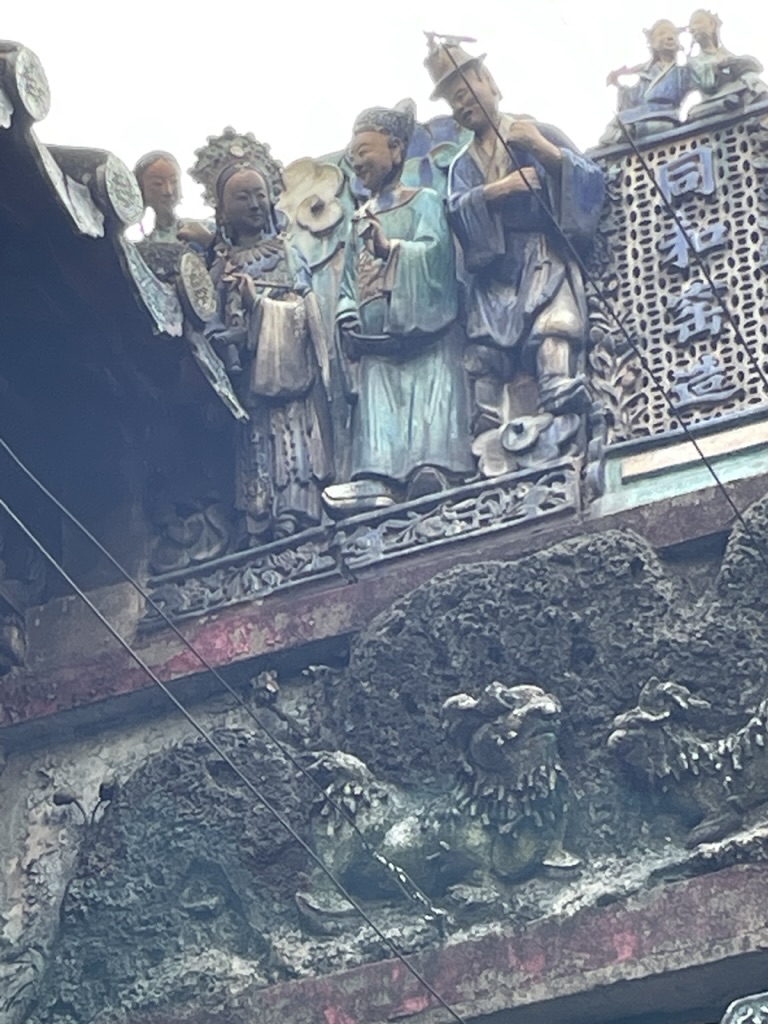
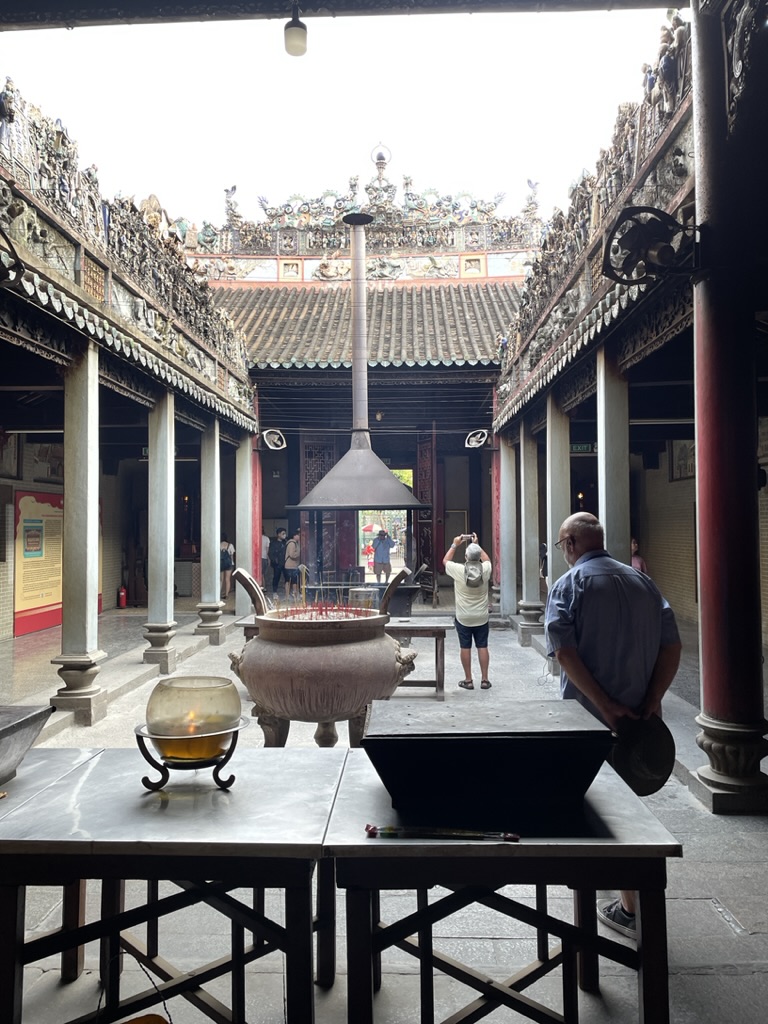
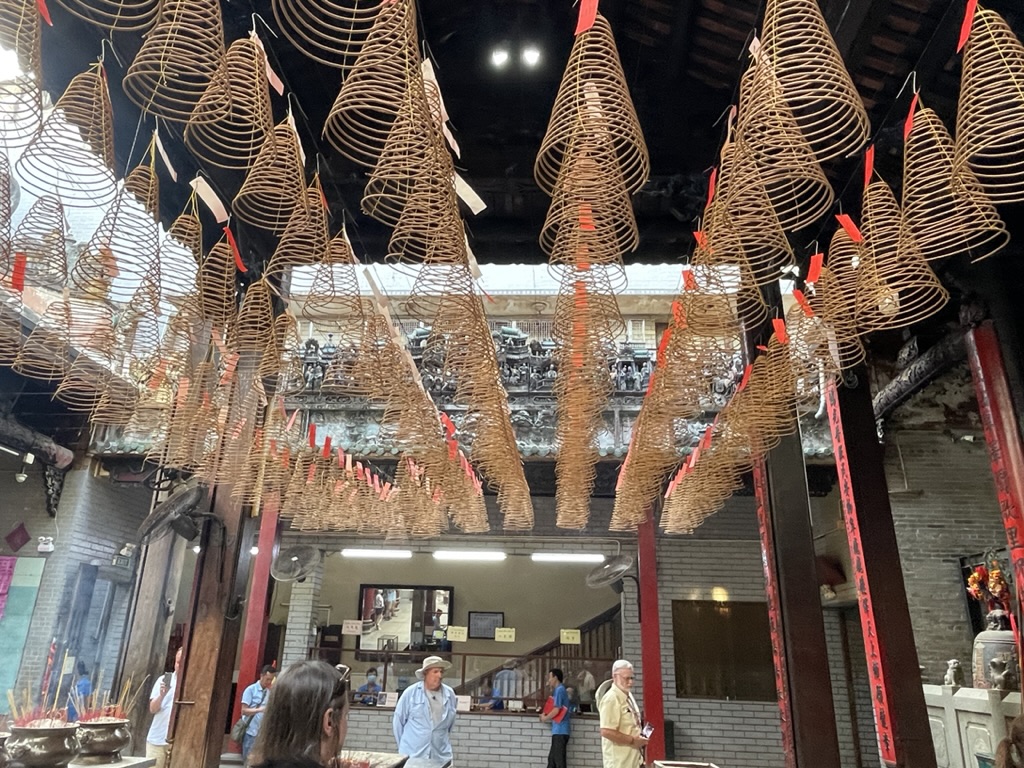
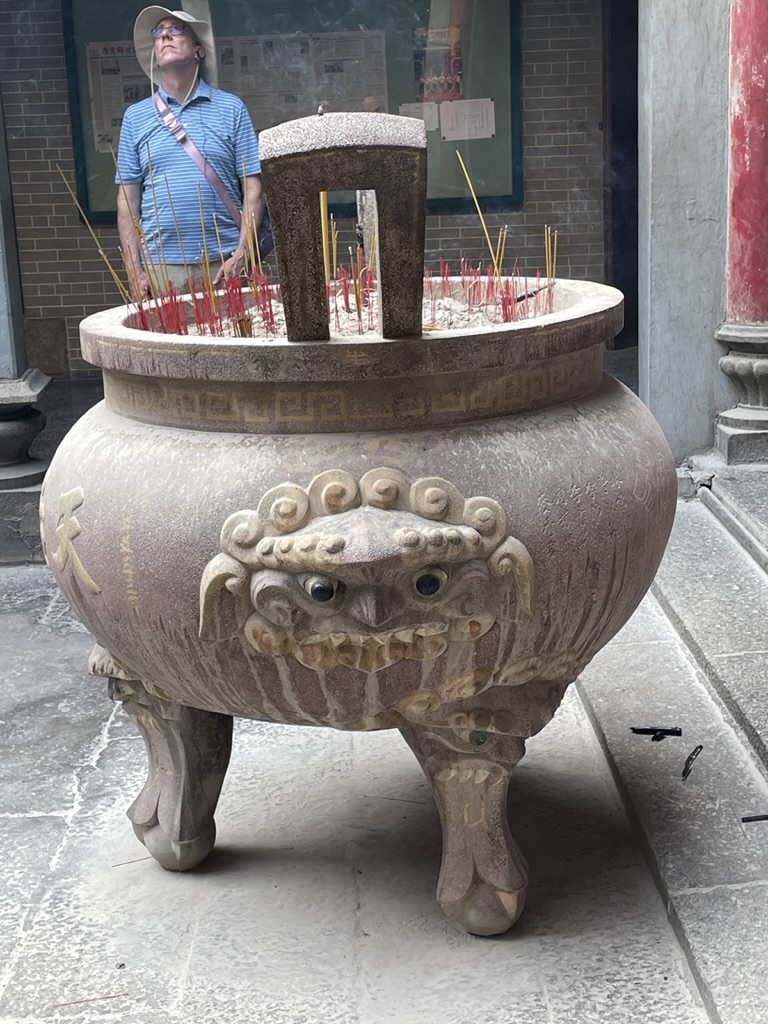
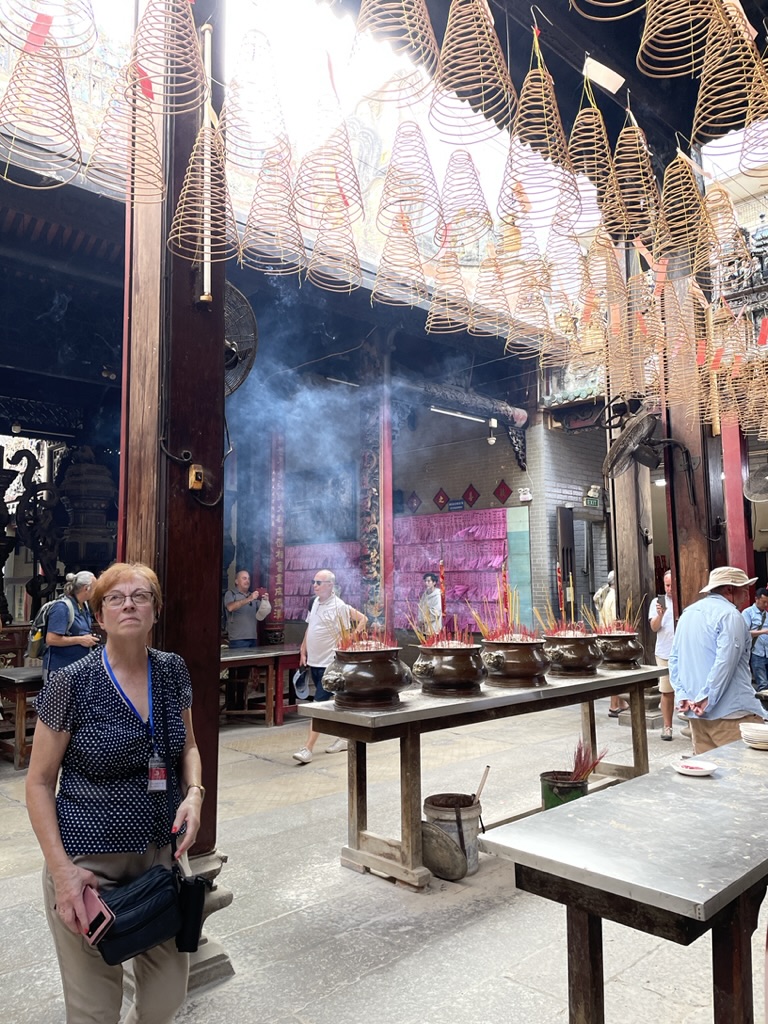
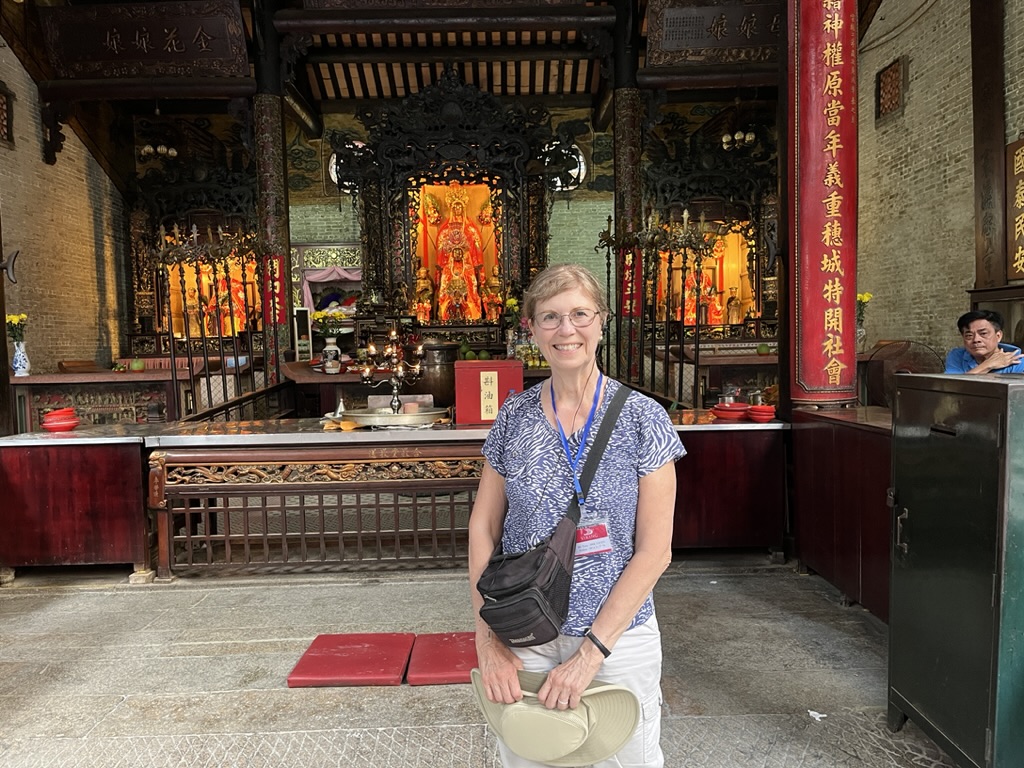
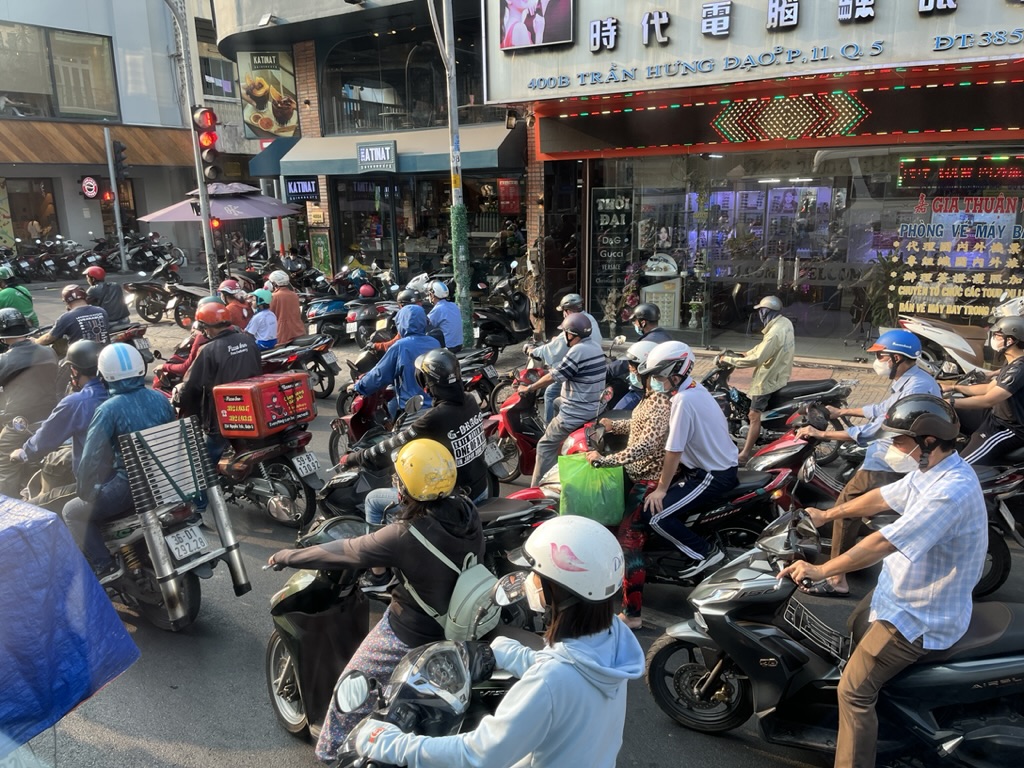
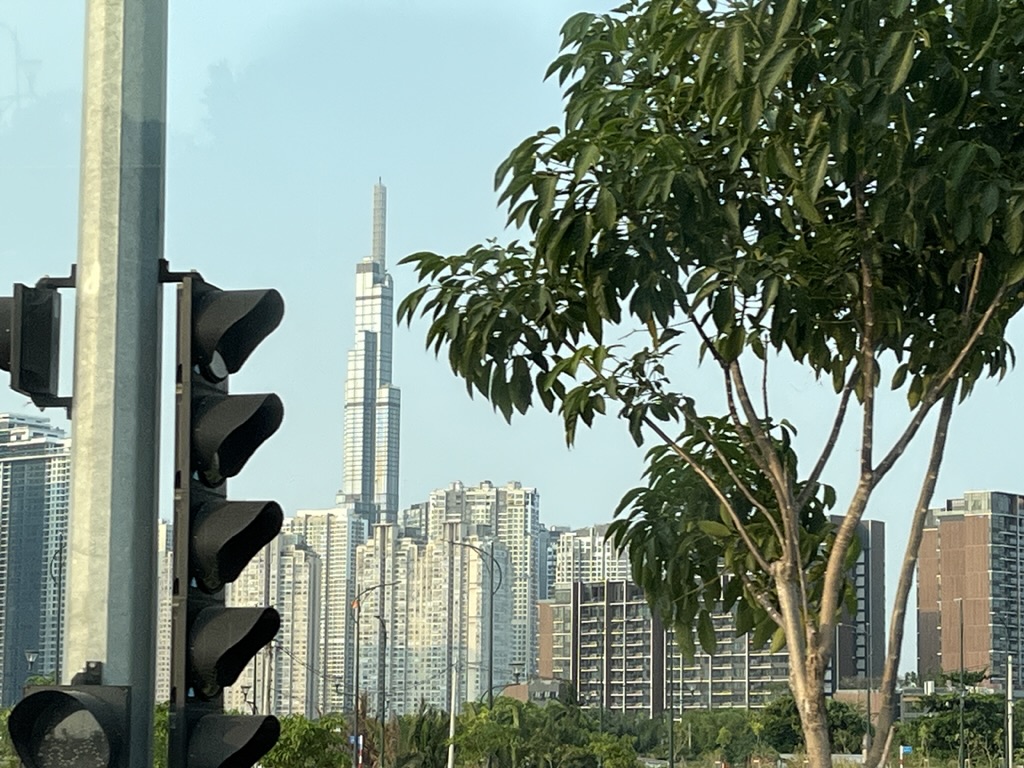
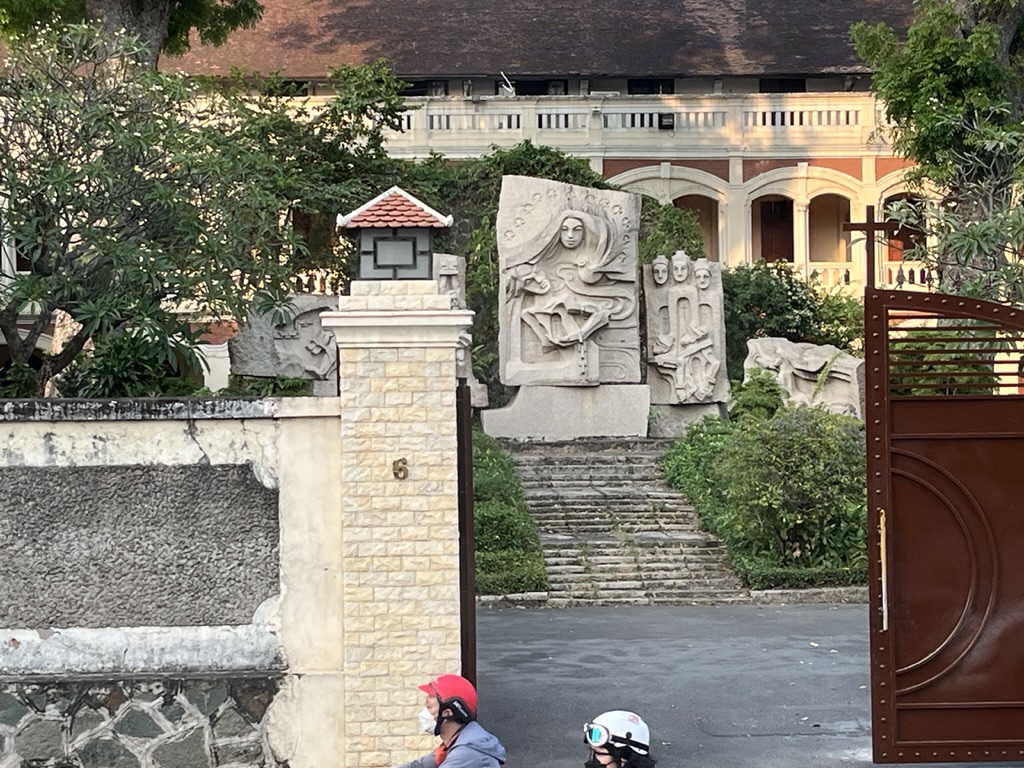
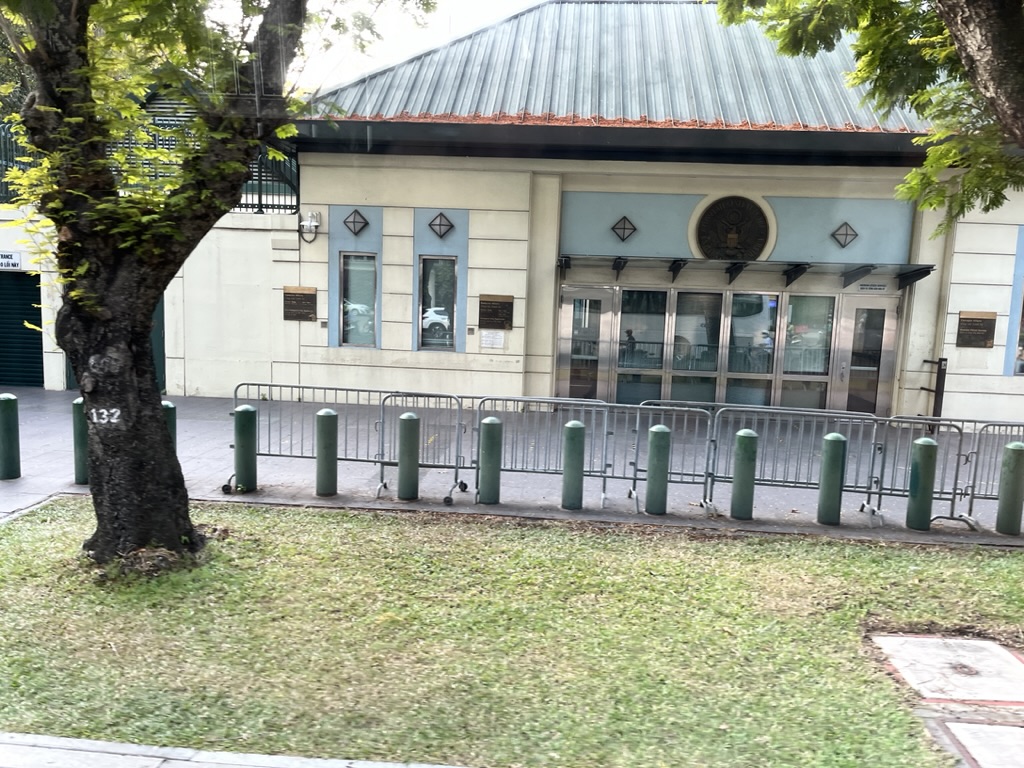
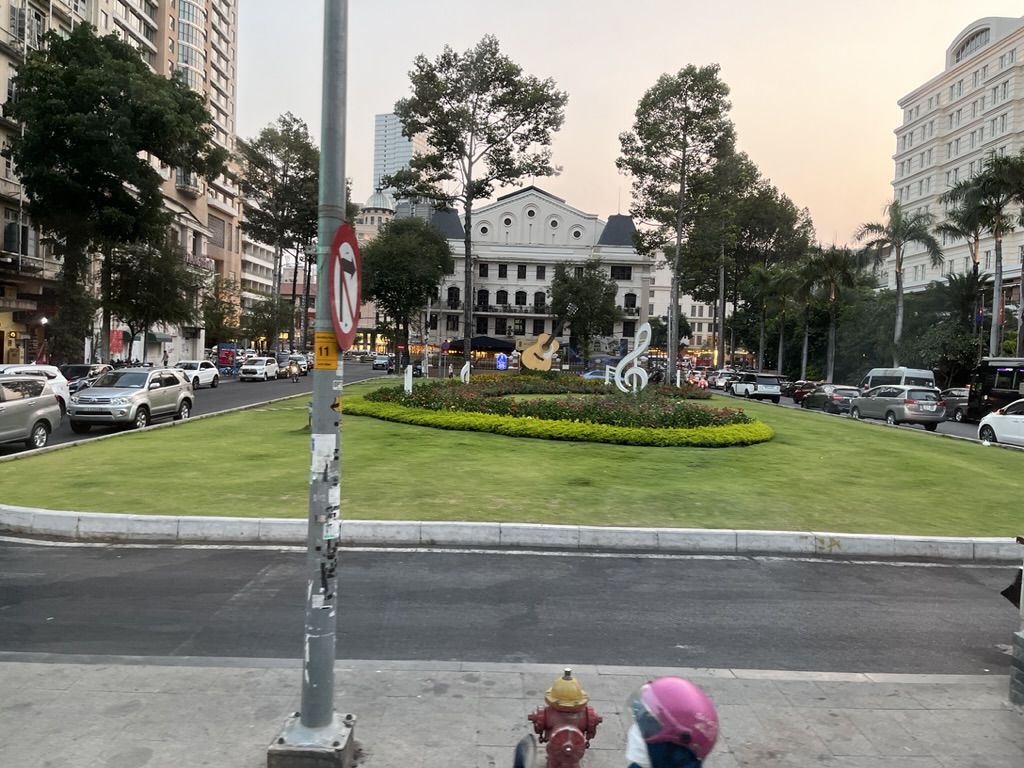
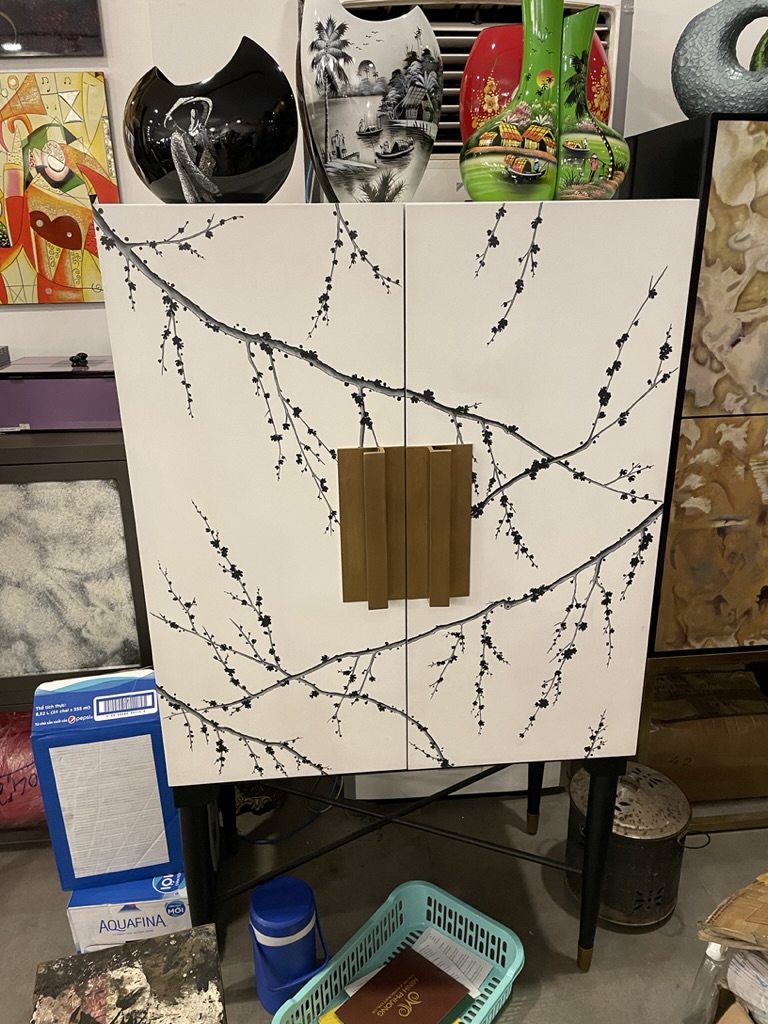
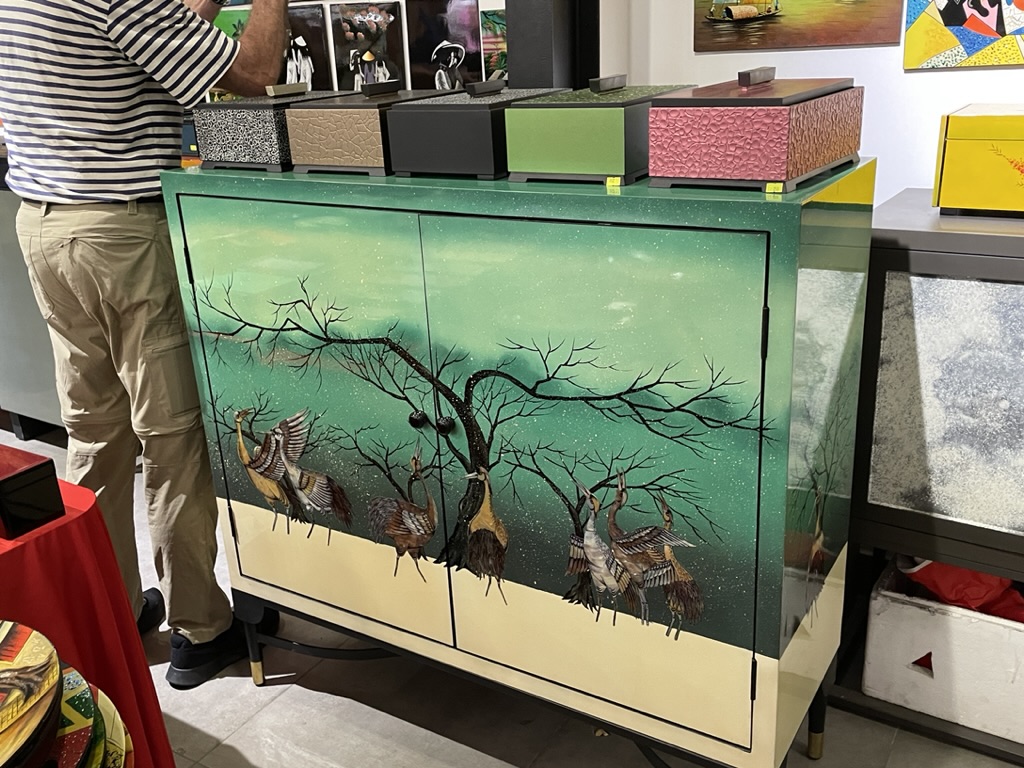
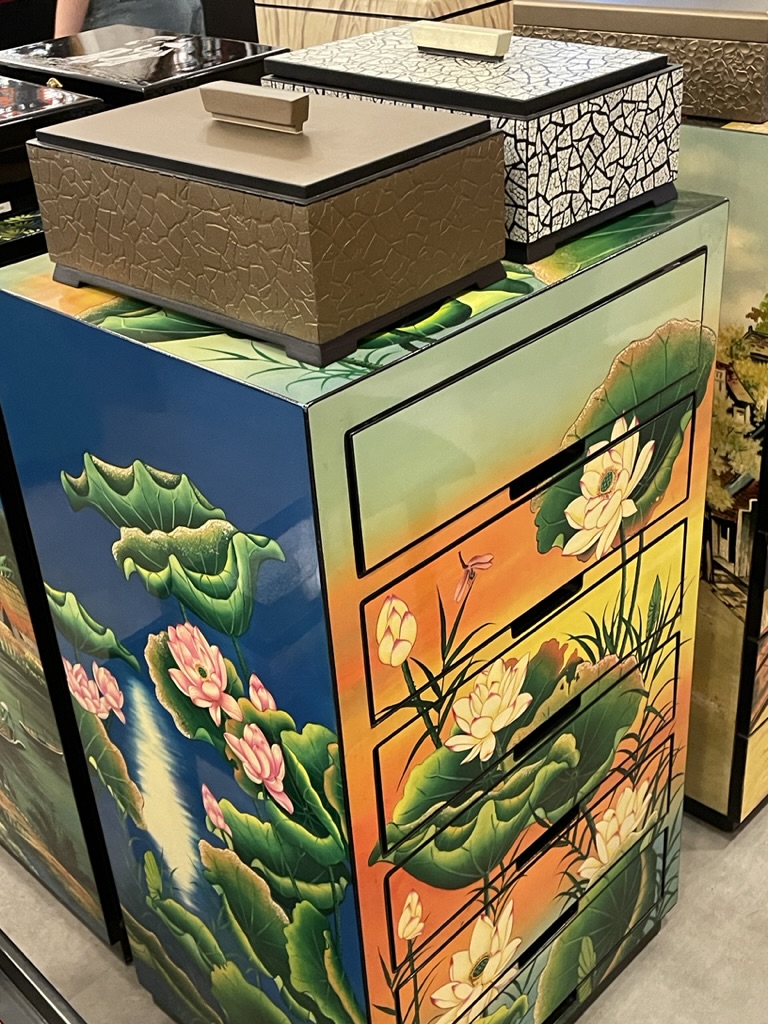
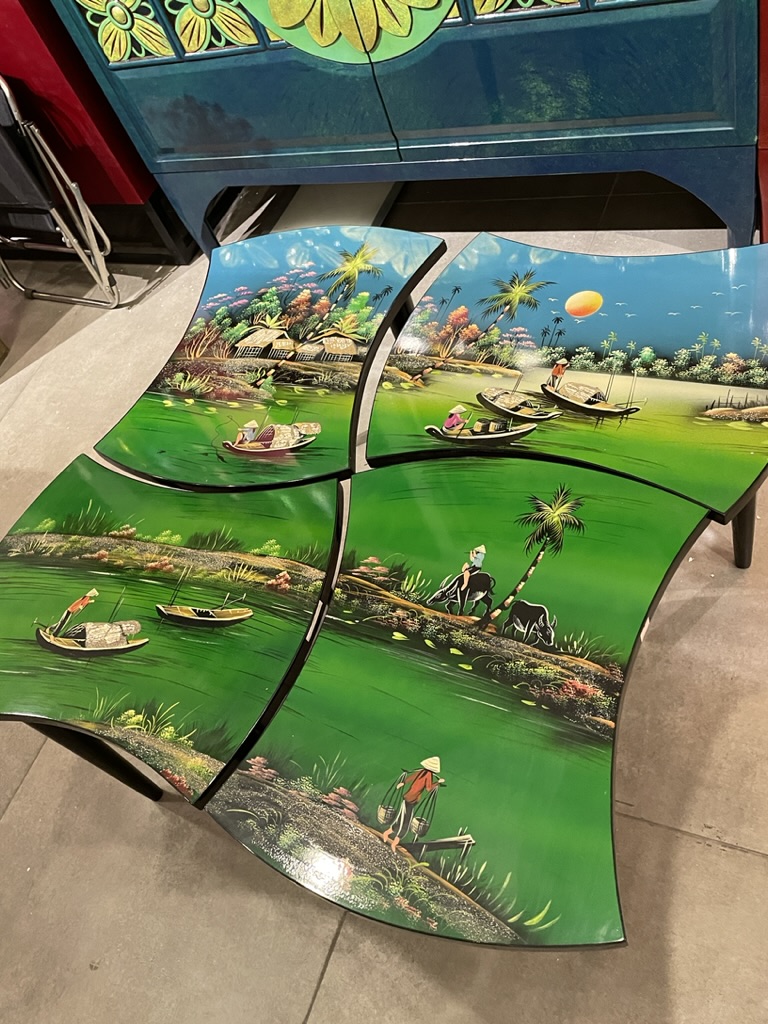
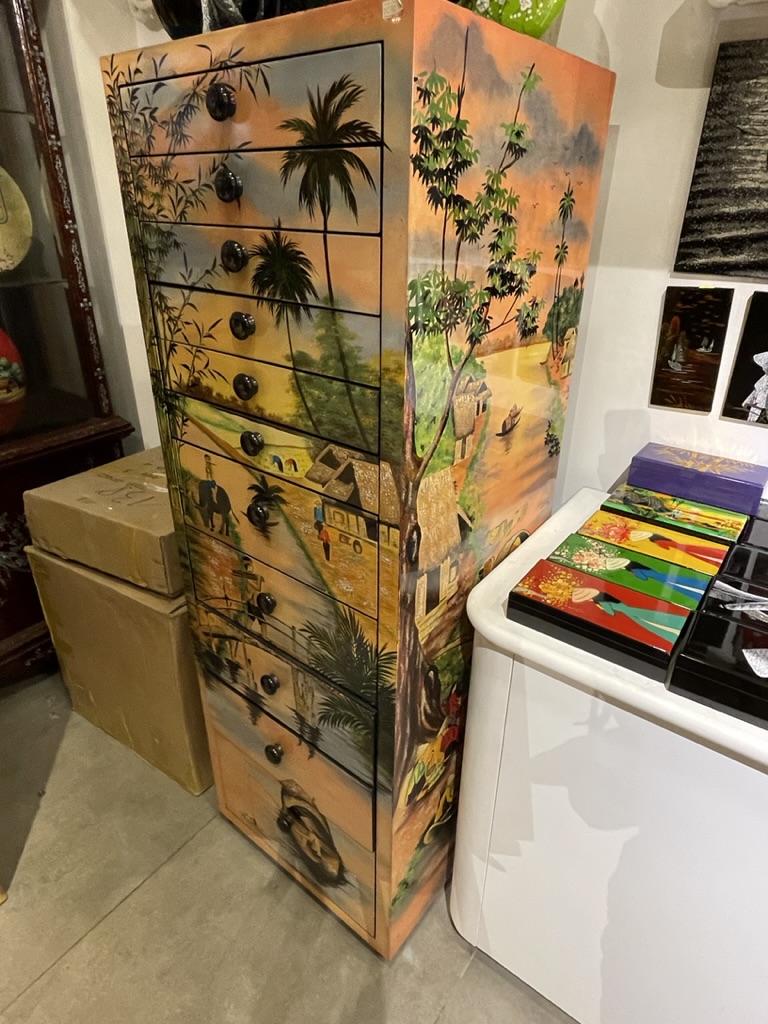
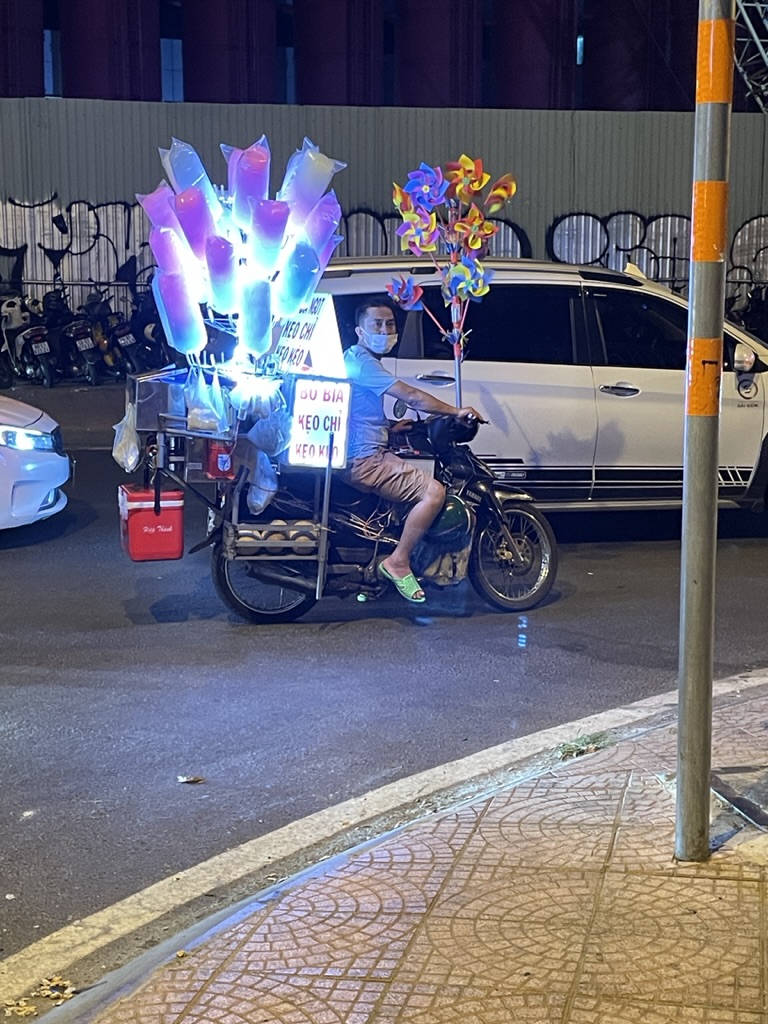
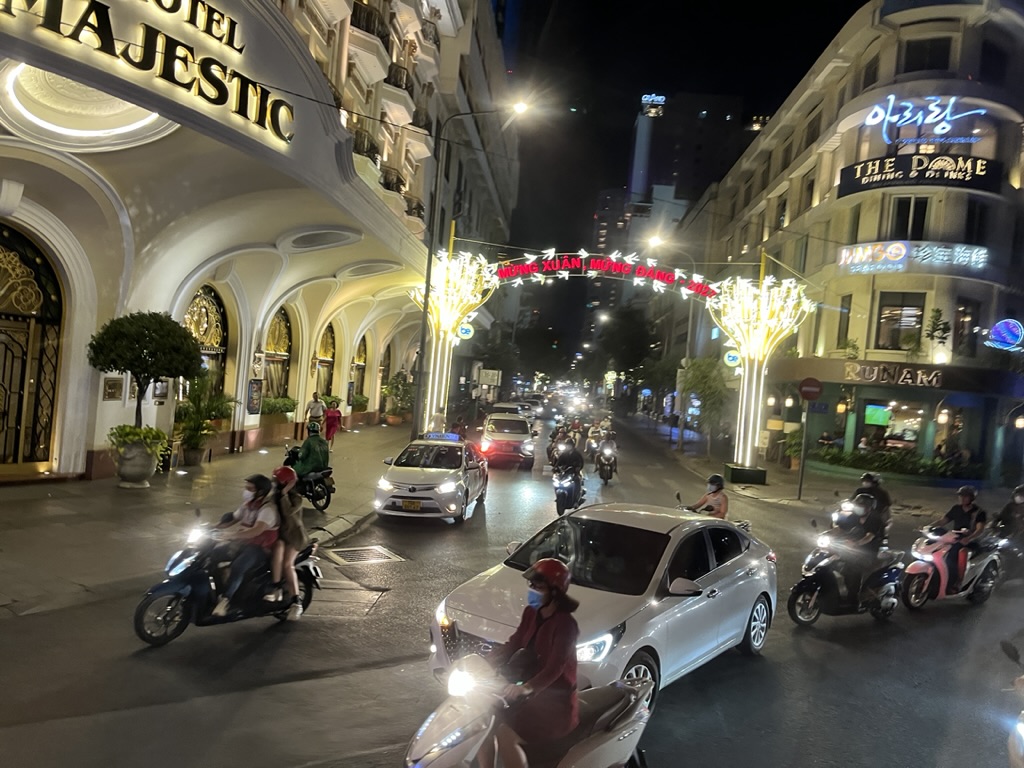
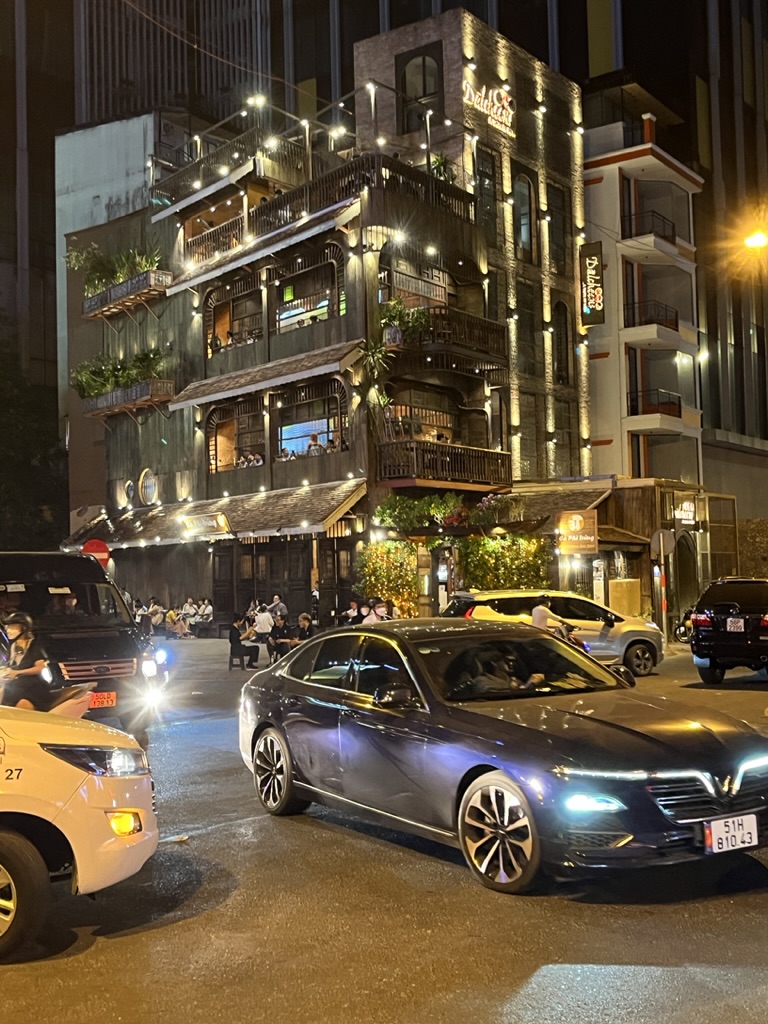
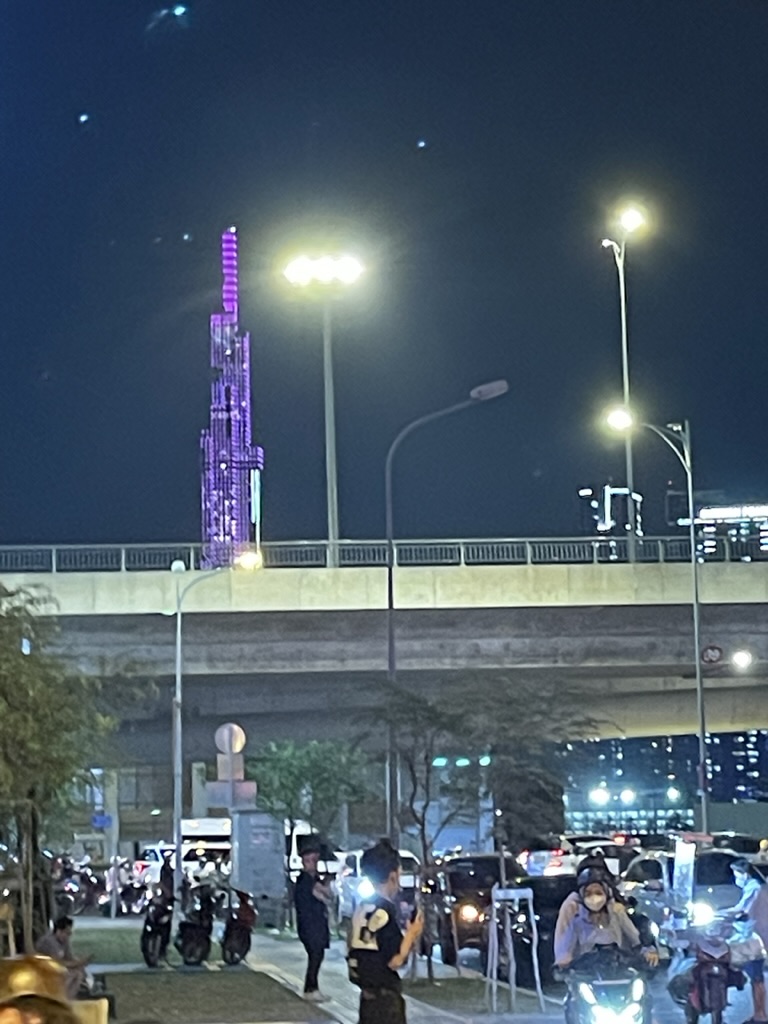
Amazing blog today. You two work so hard to make your interesting visits great reading and viewing material. Thanks for your efforts!
Thanks! While we do this for our readers, we really do it for ourselves. It’s amazing how often we’ll use these posts to help us remember…